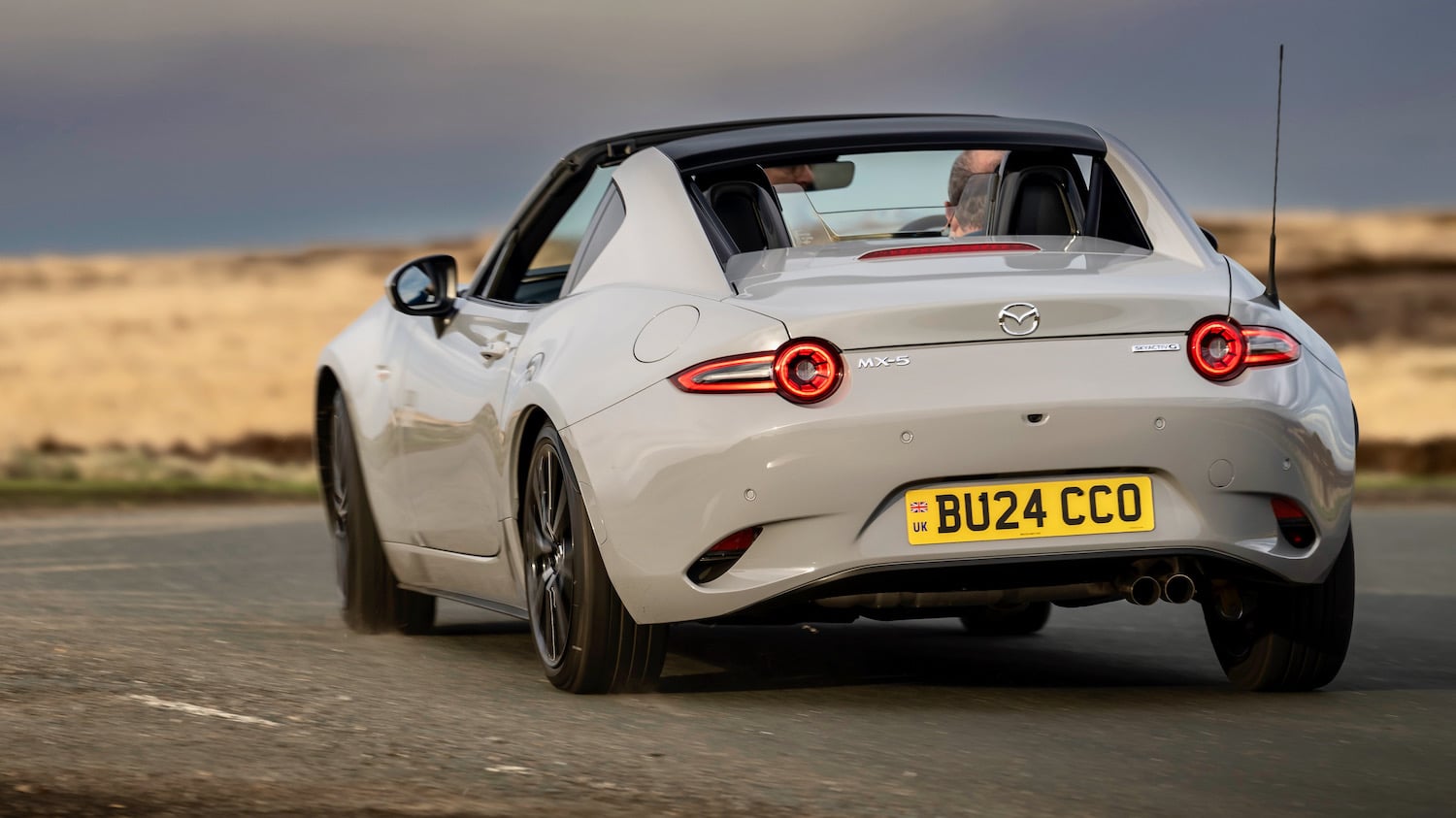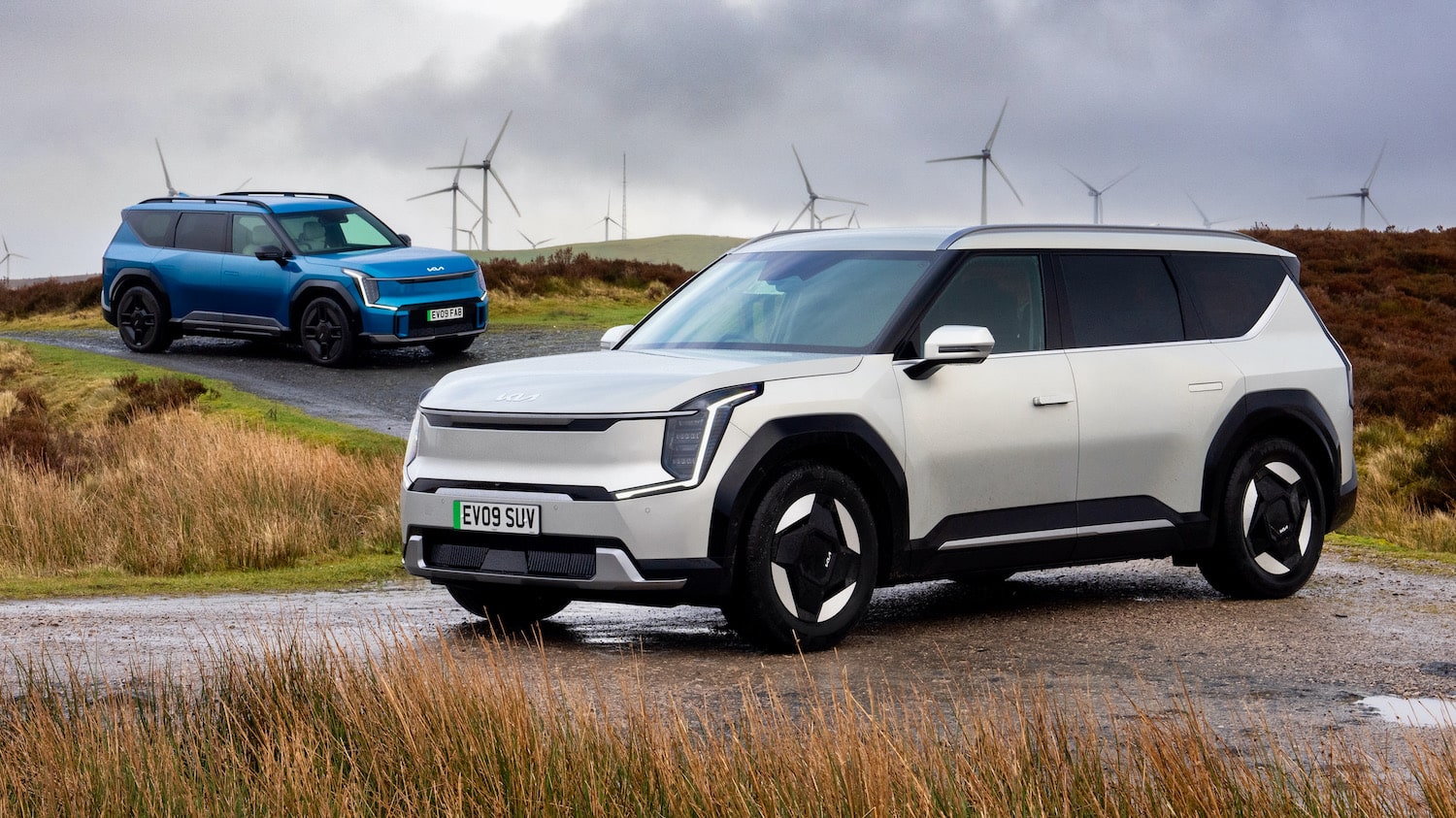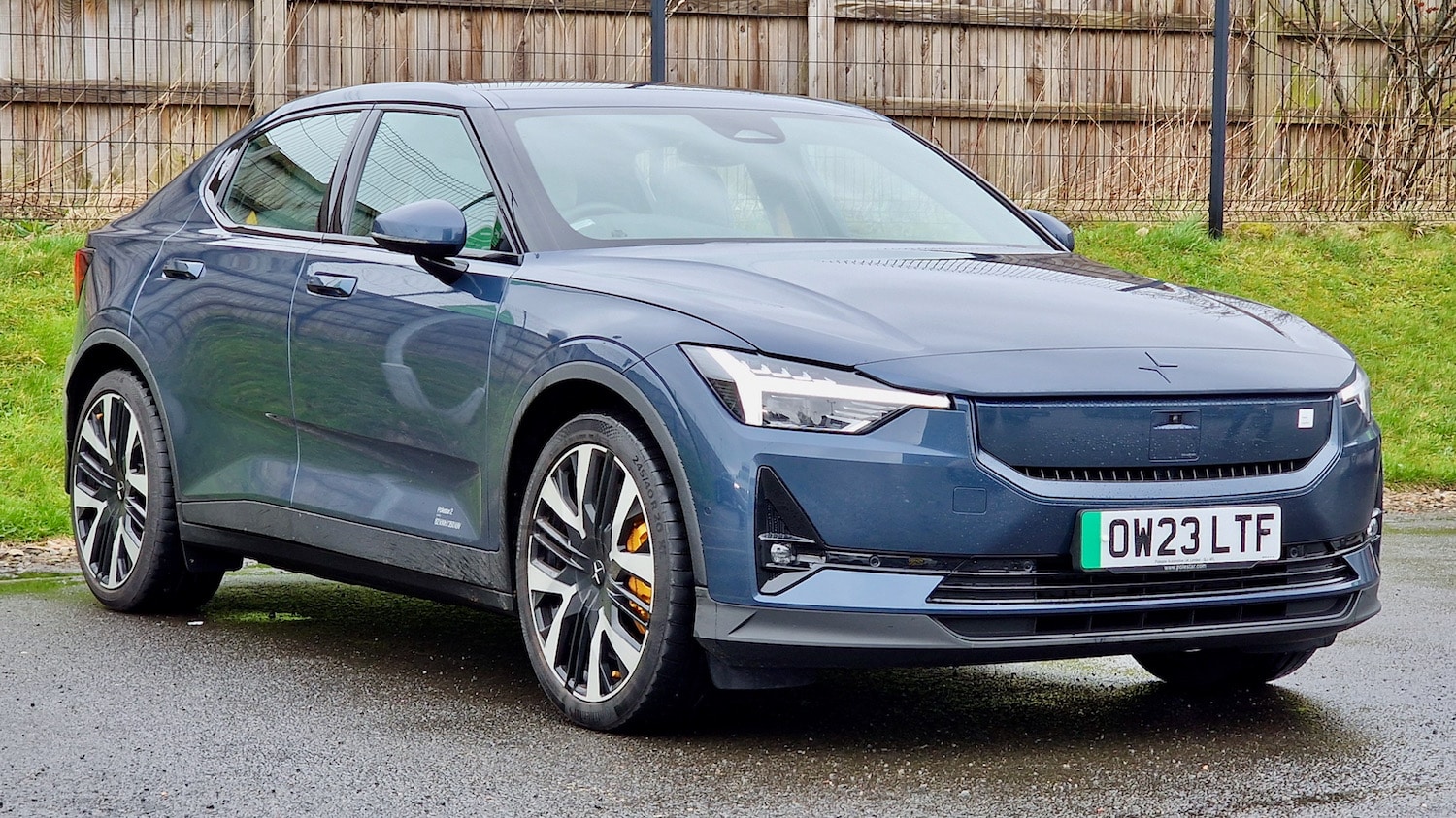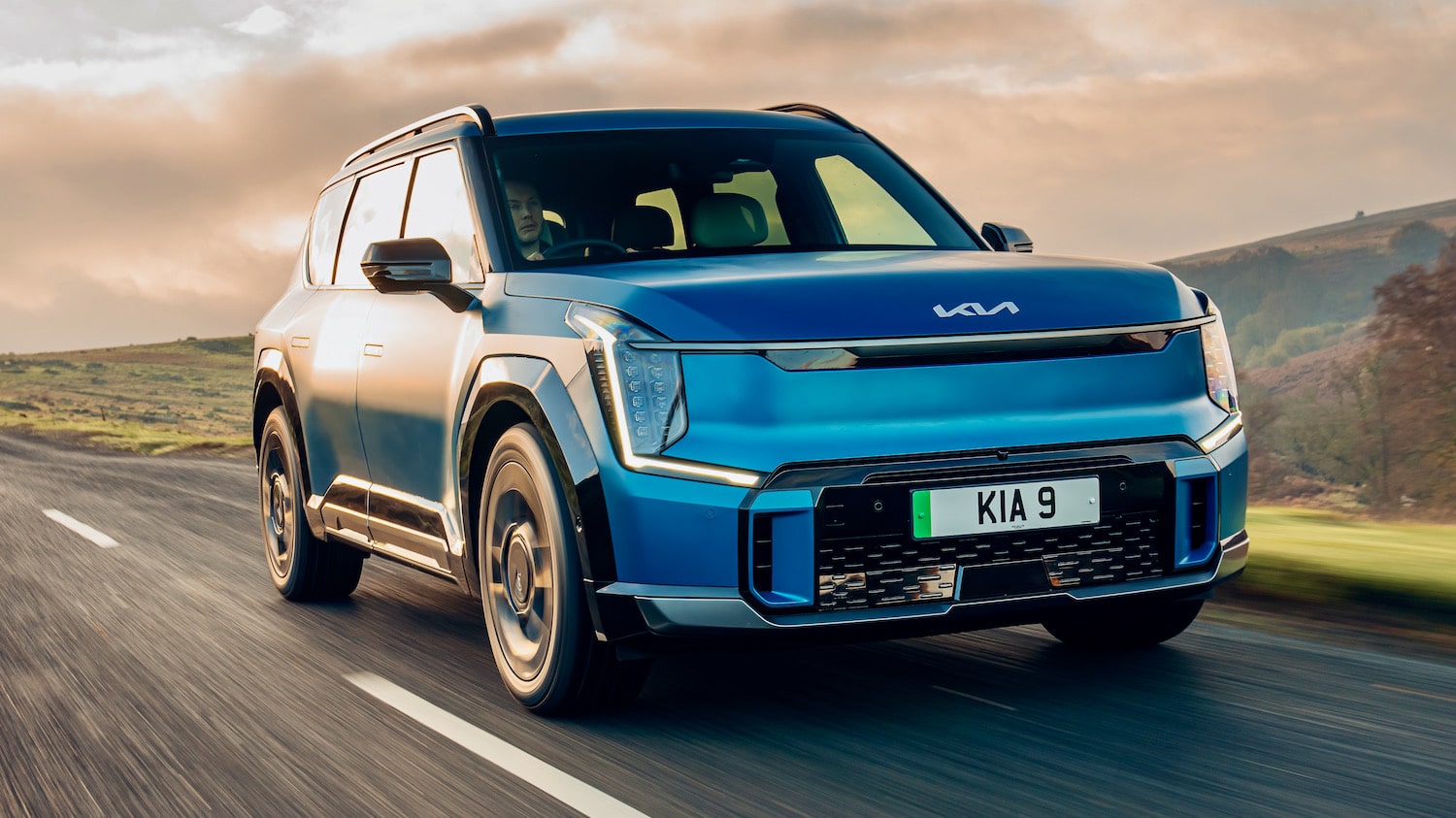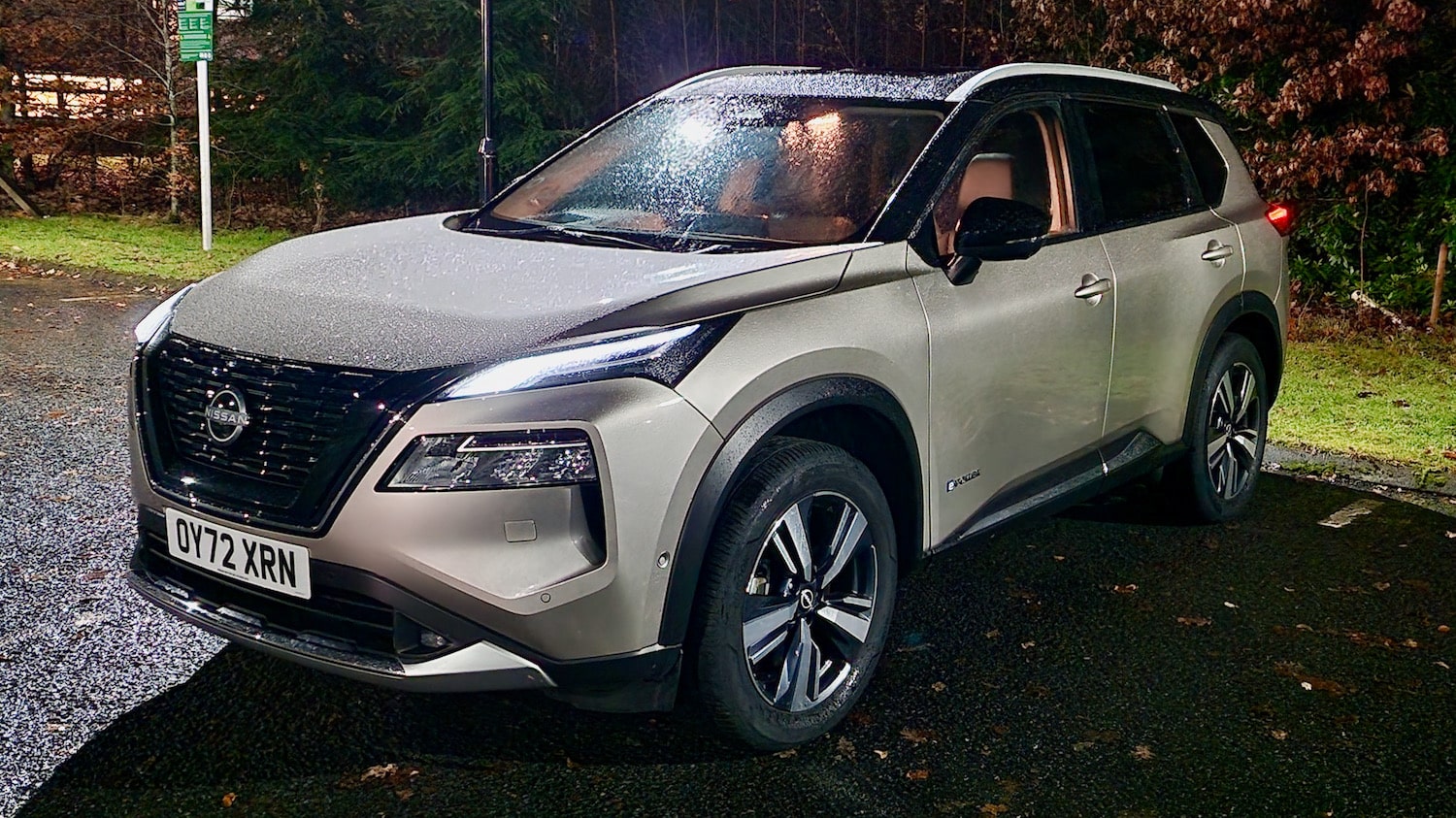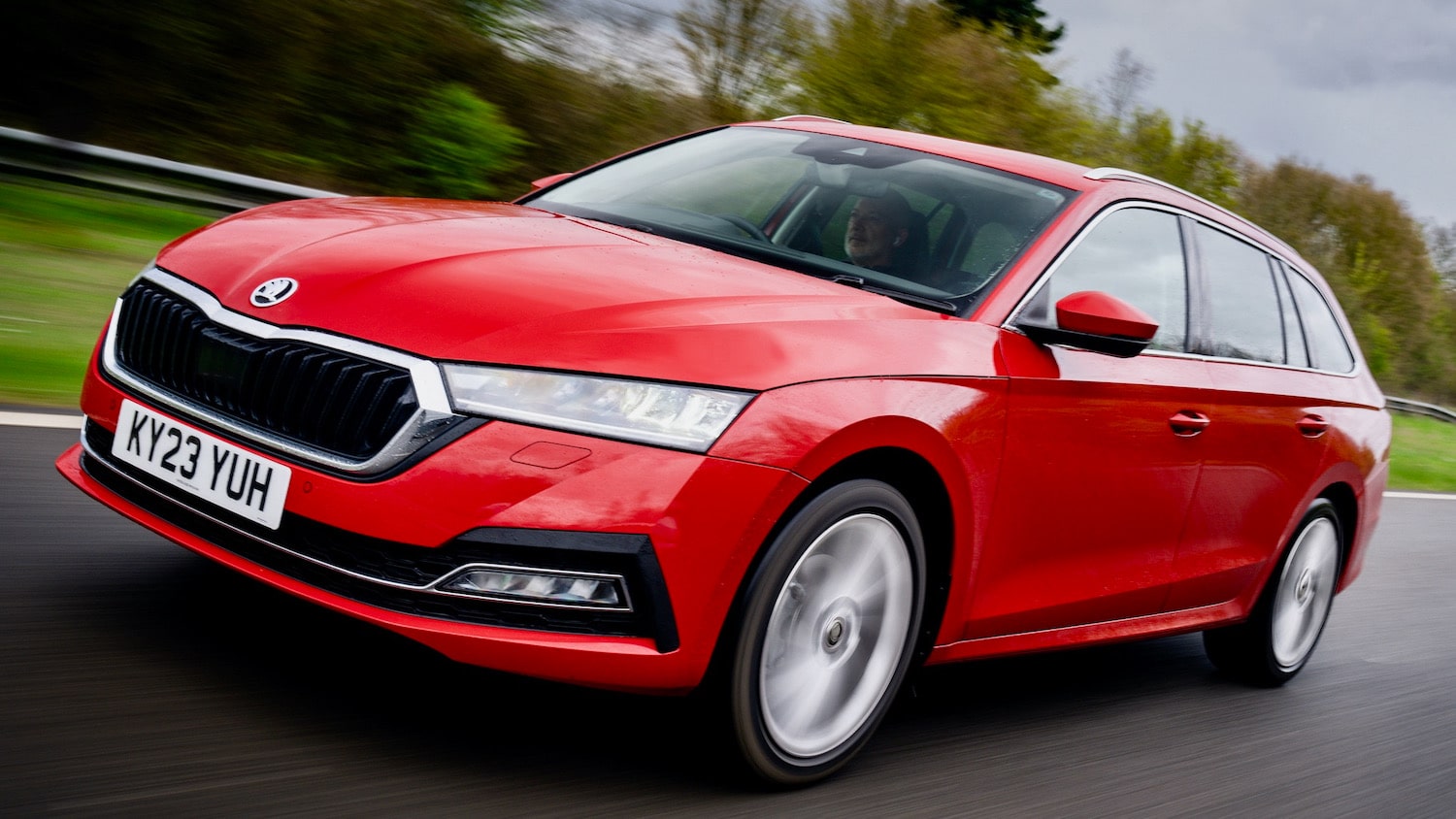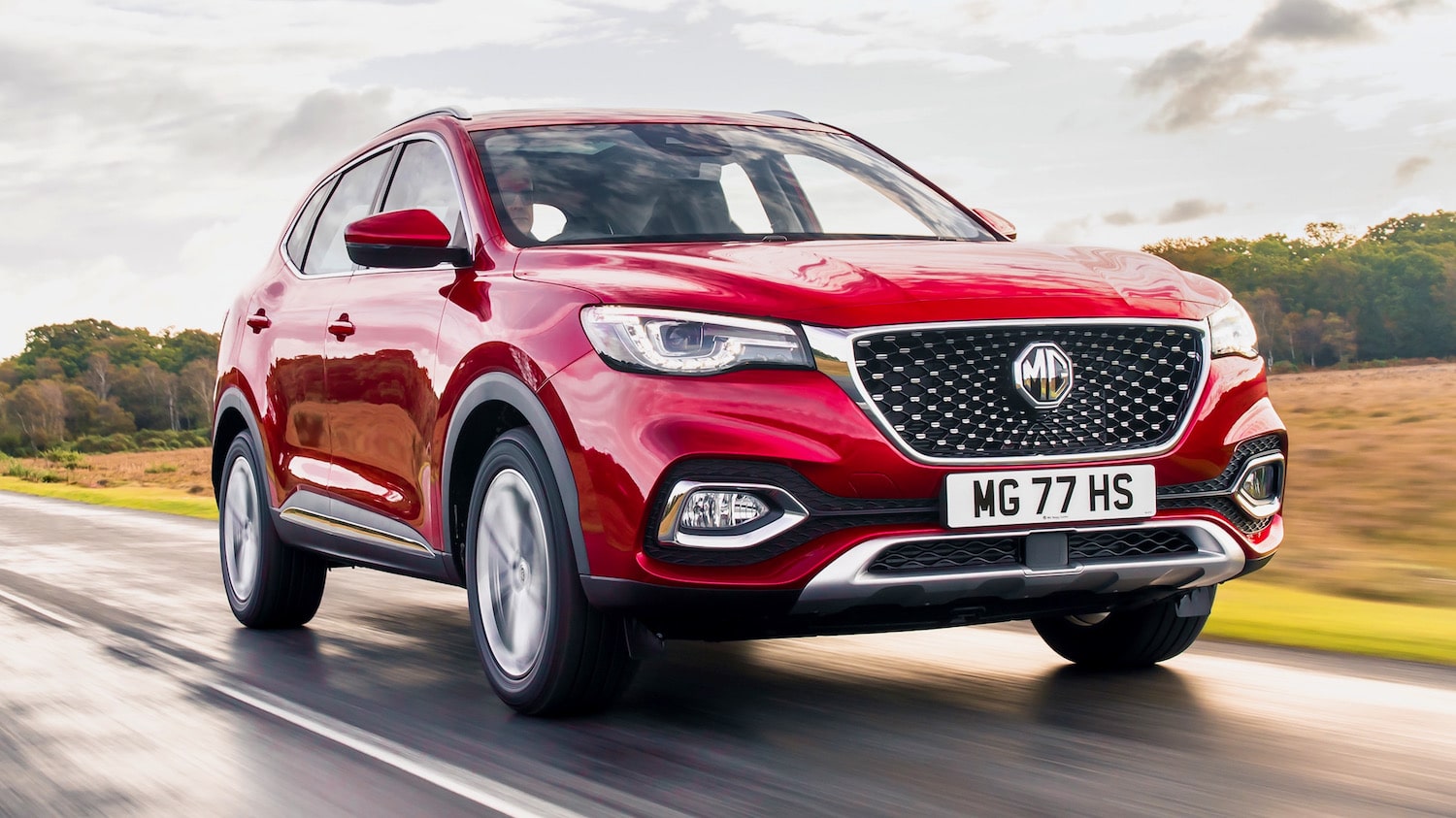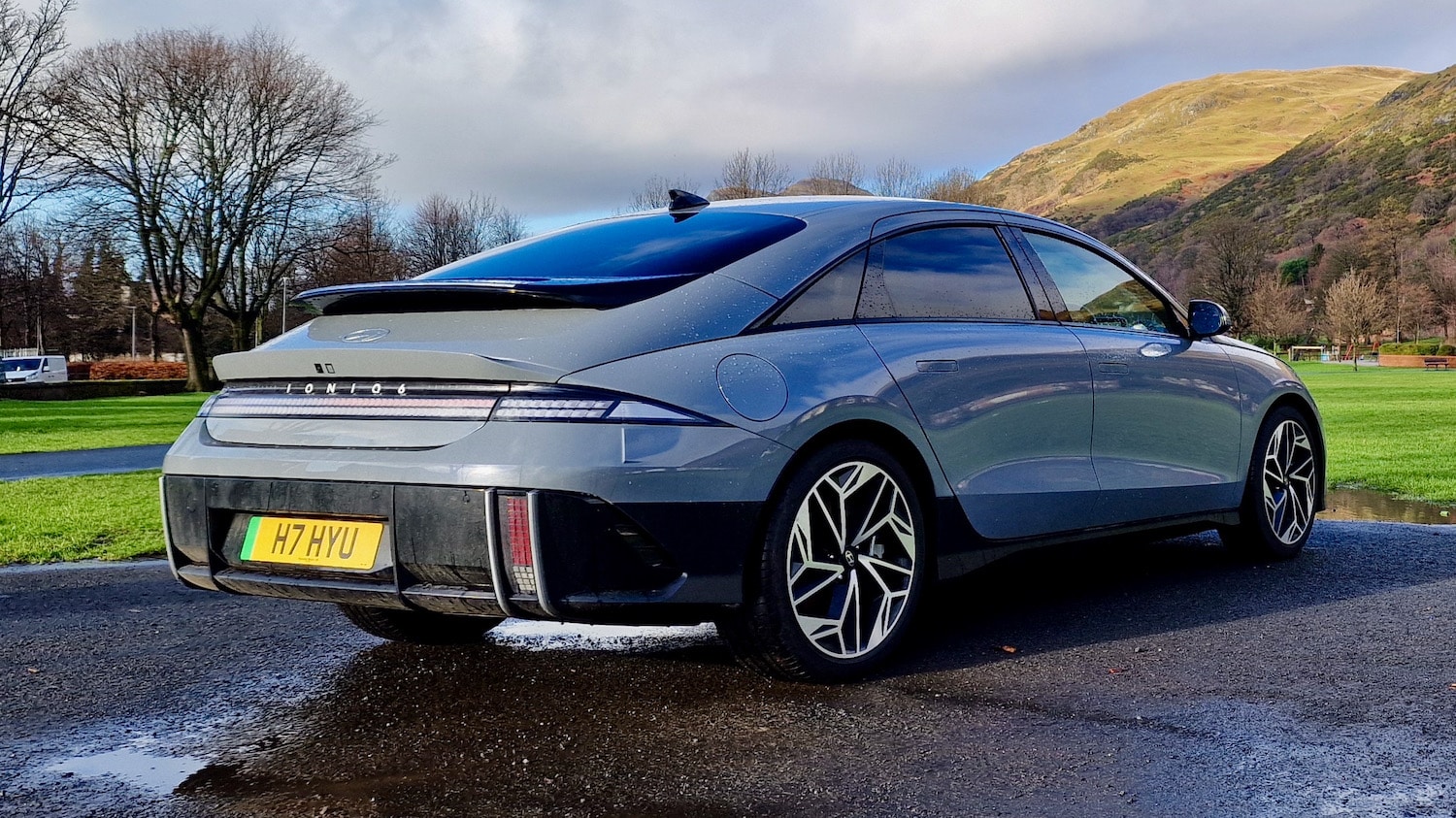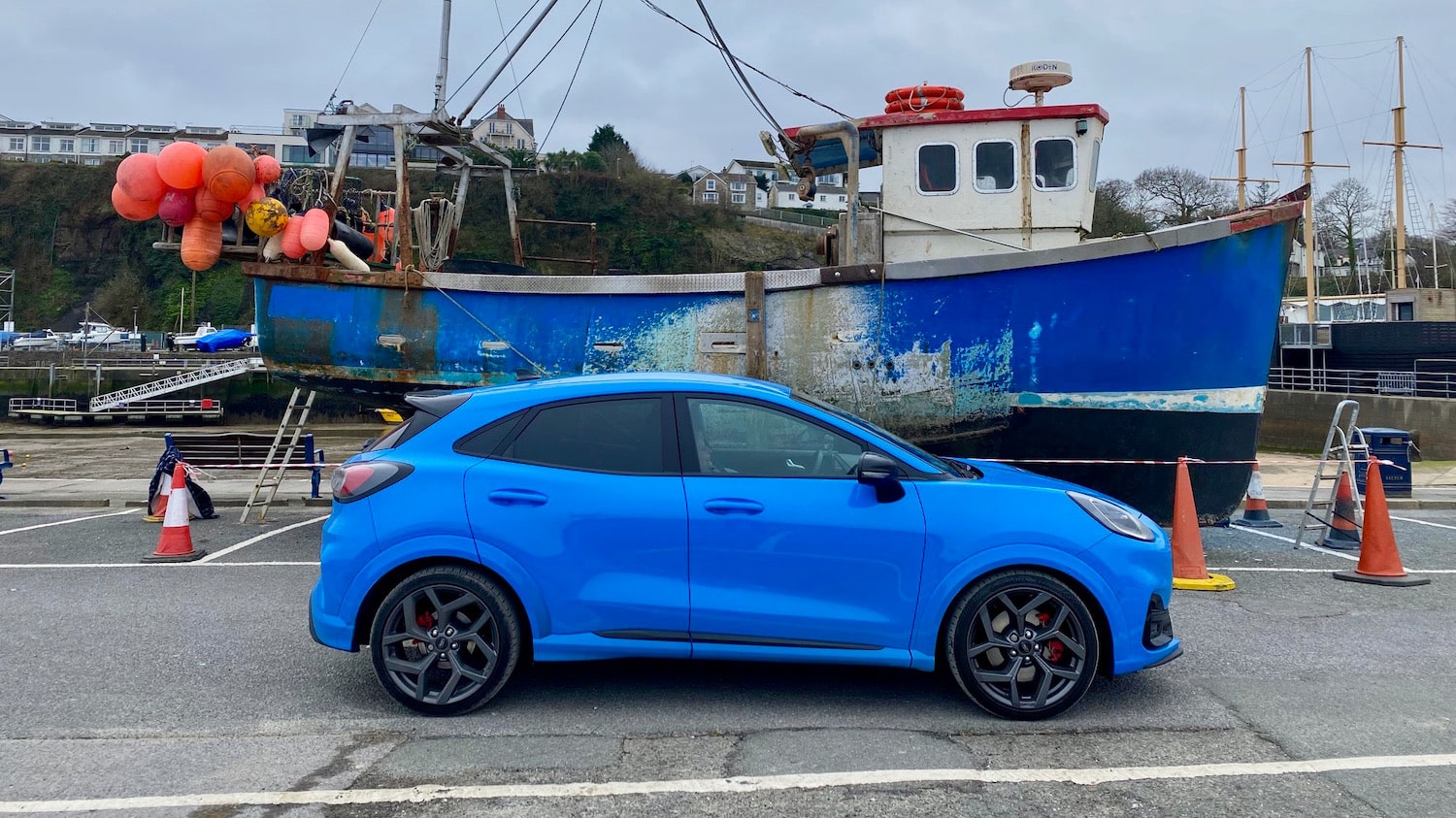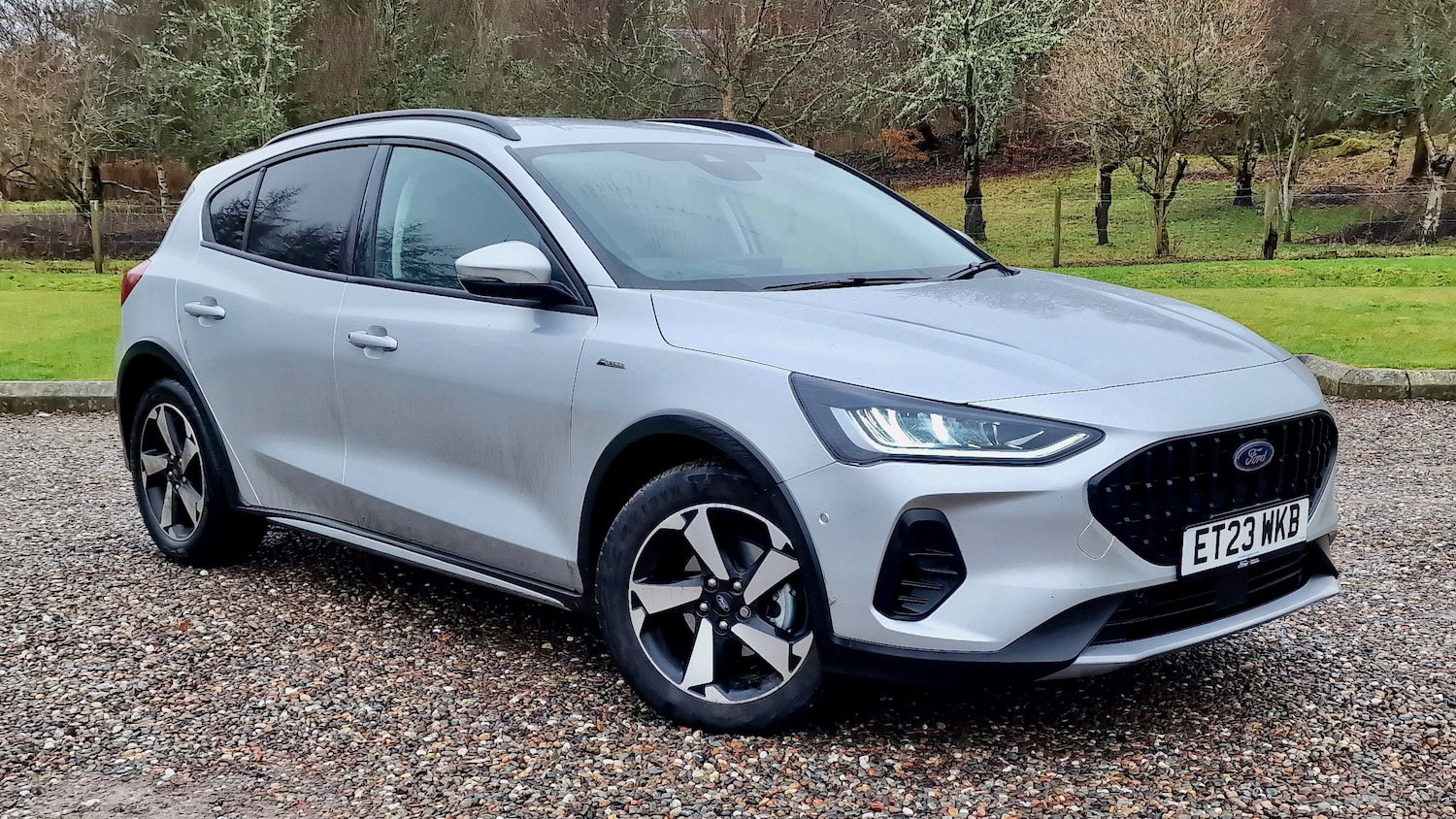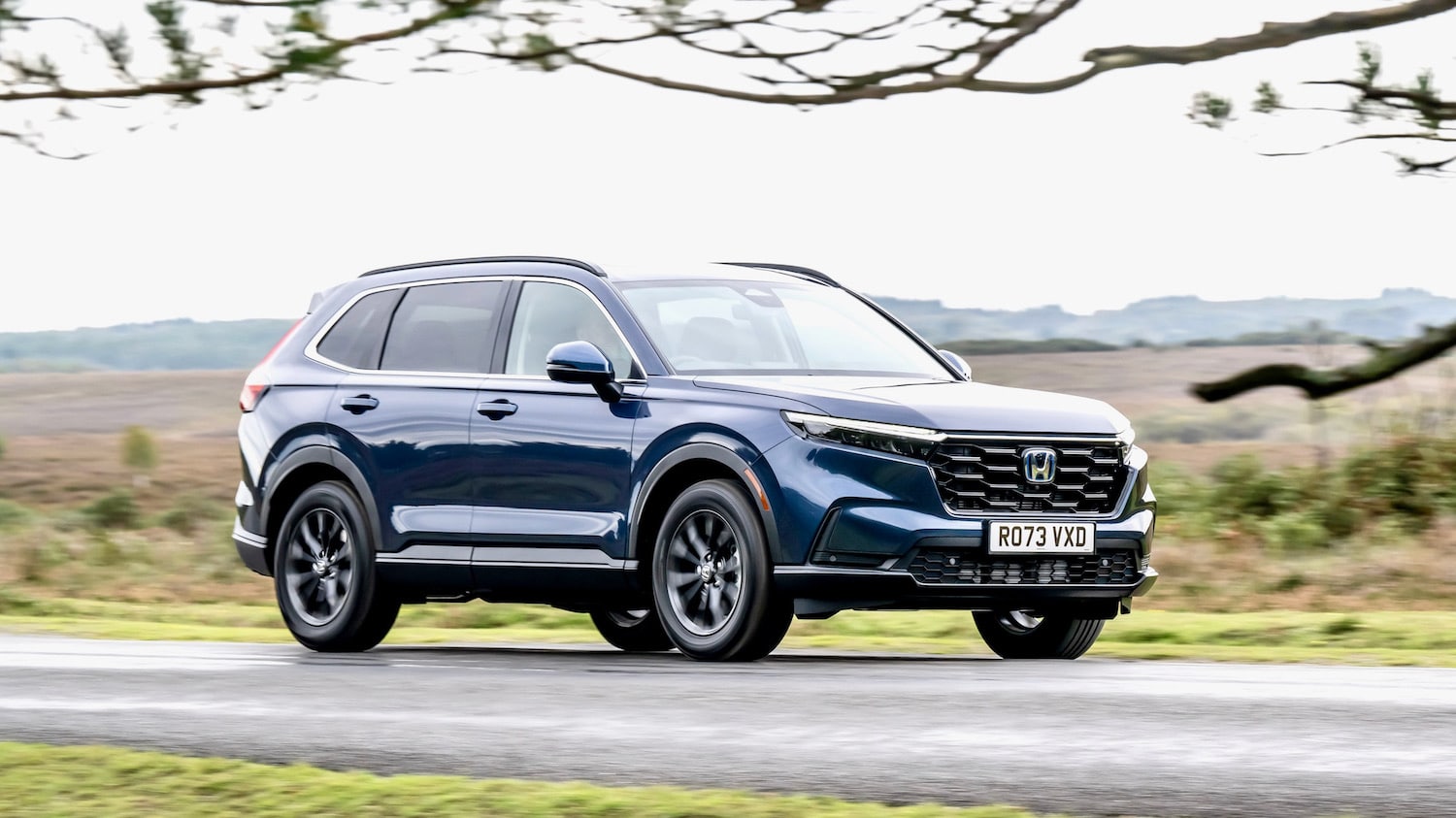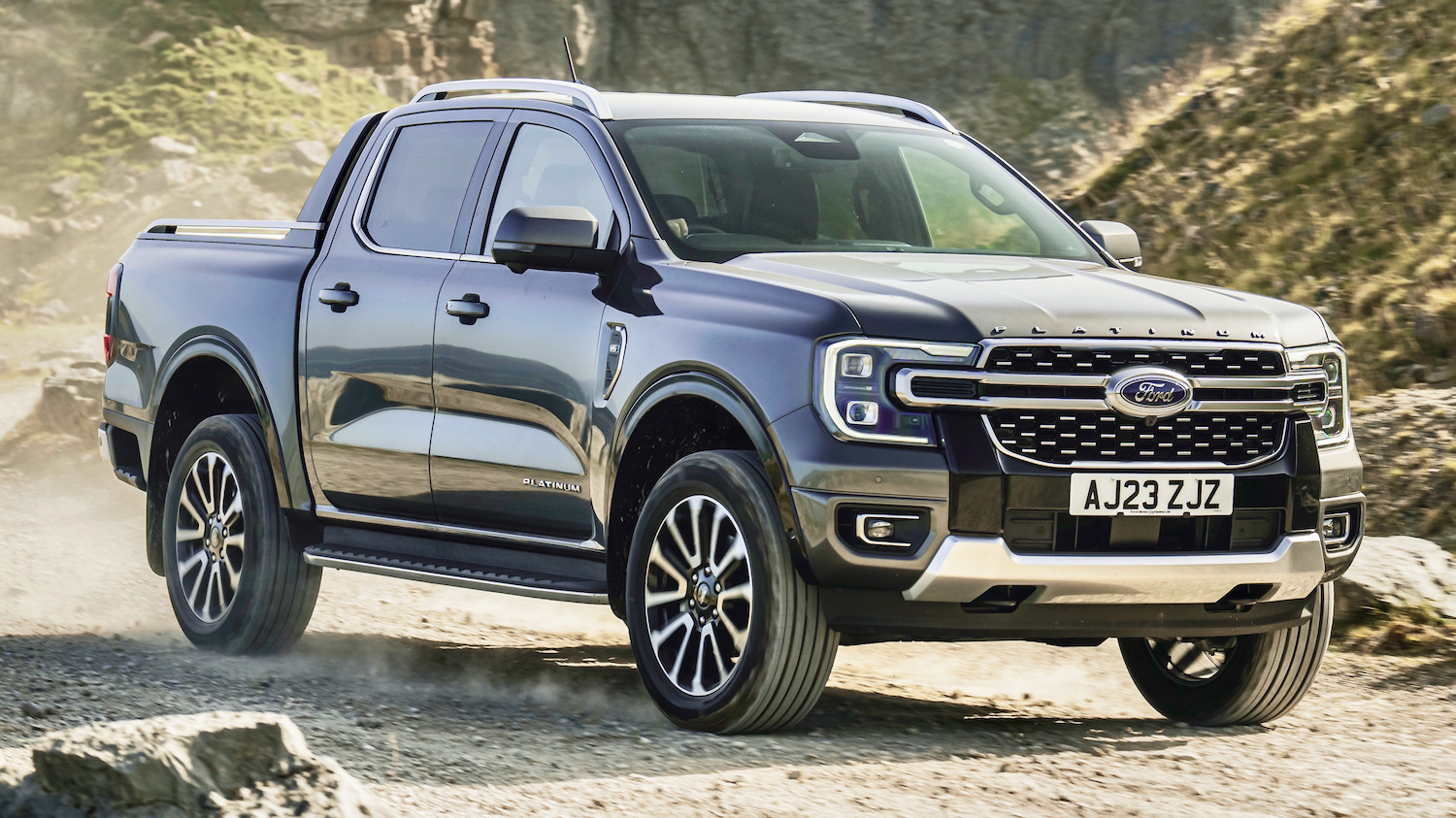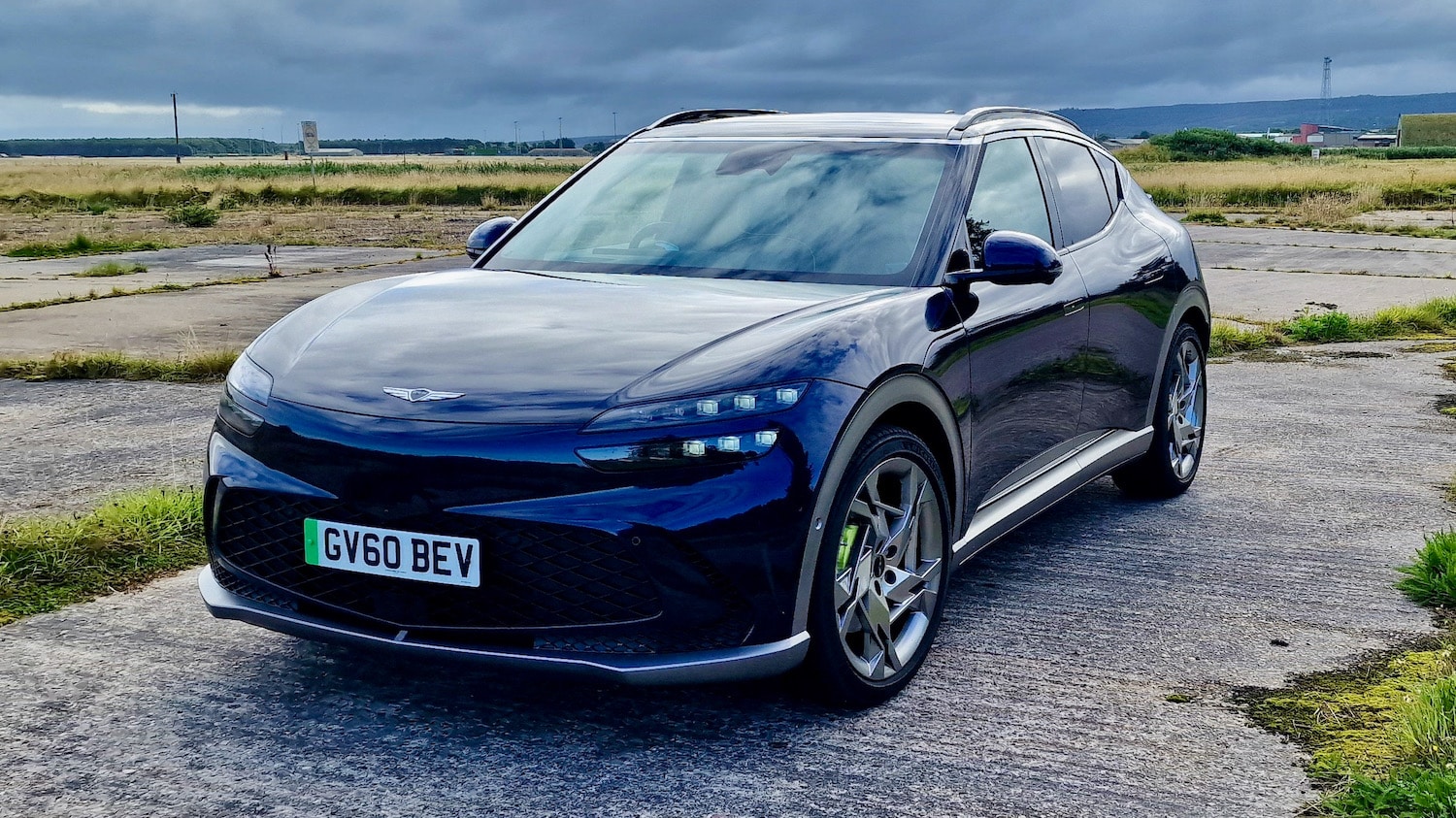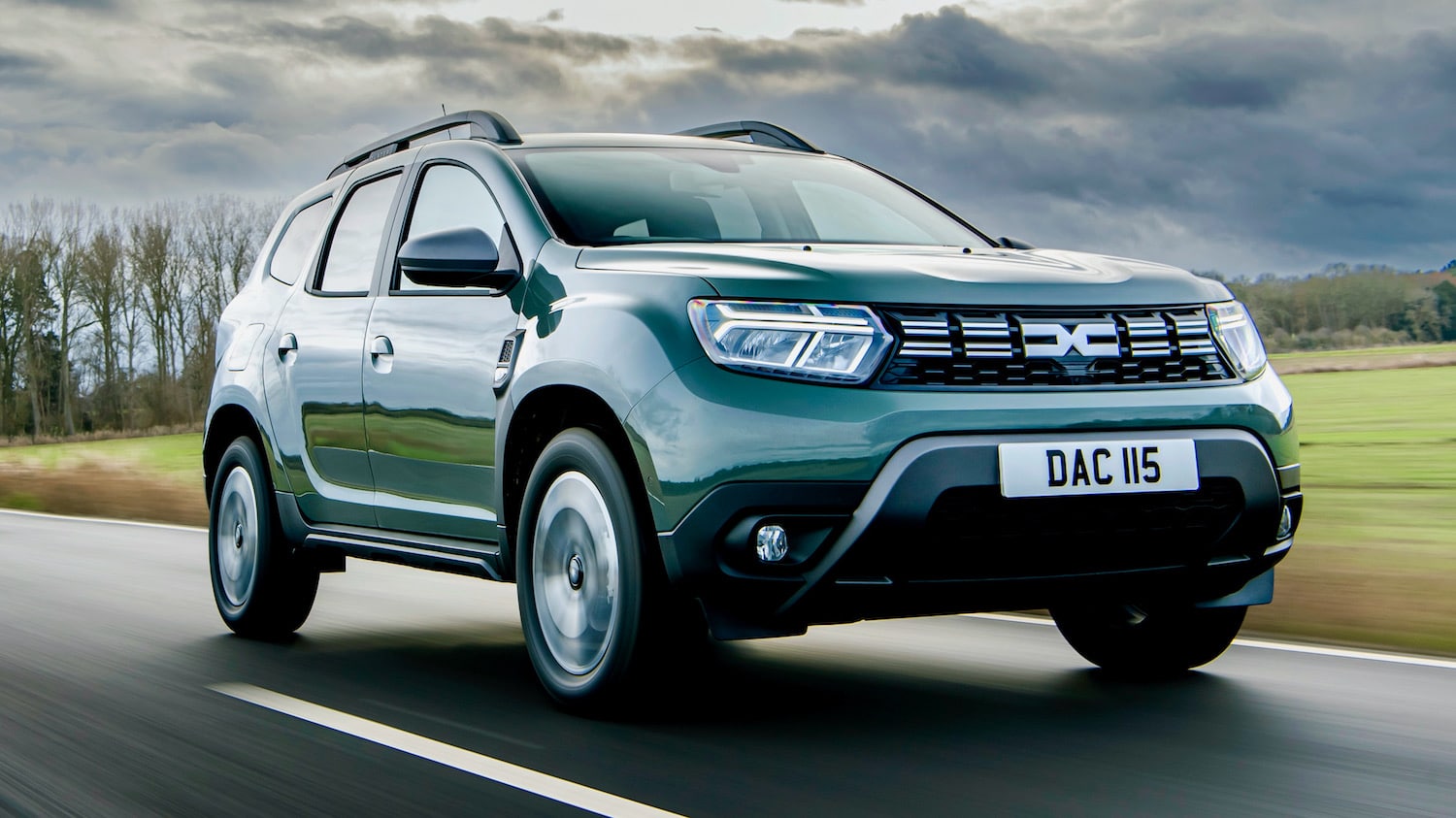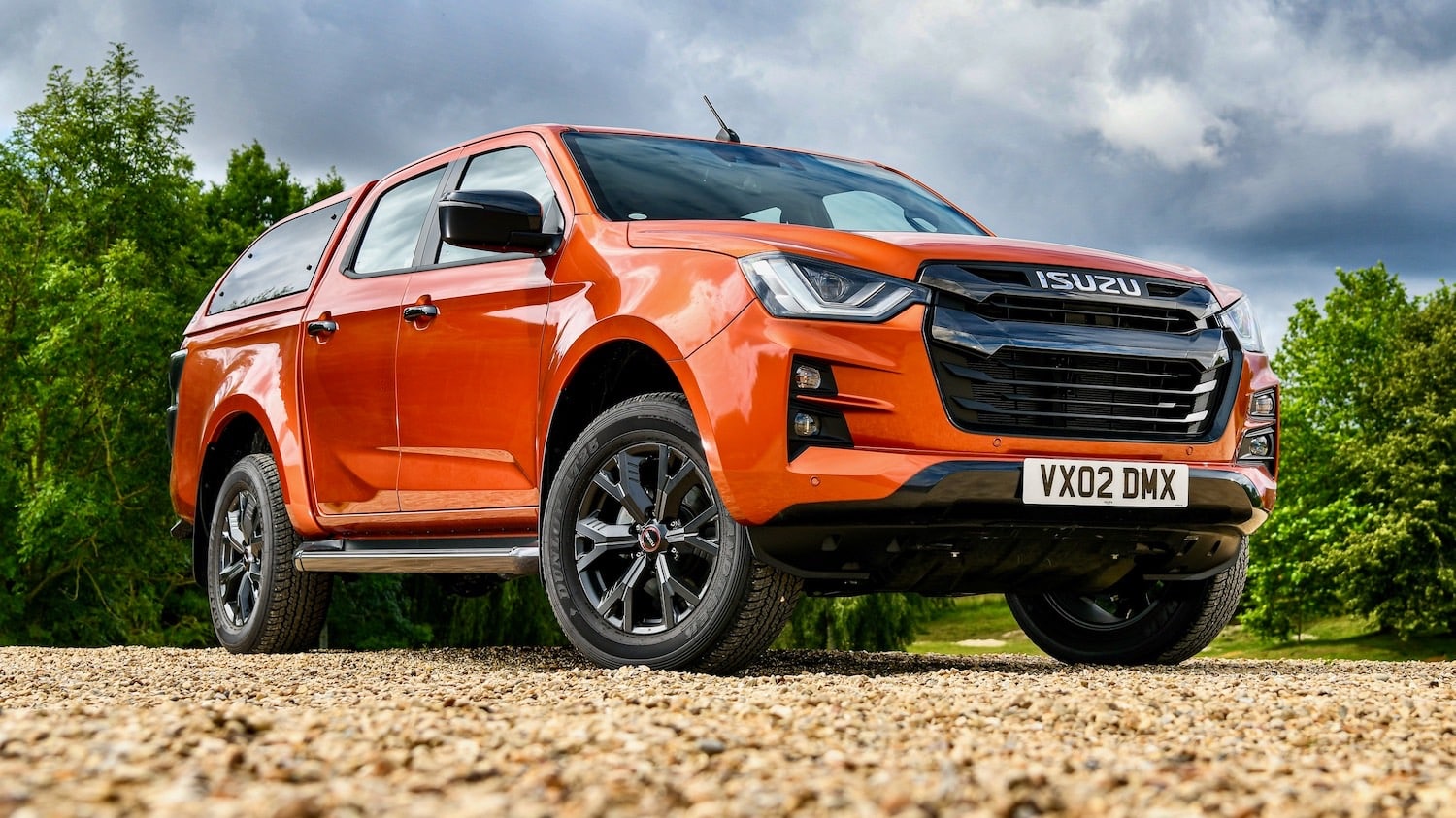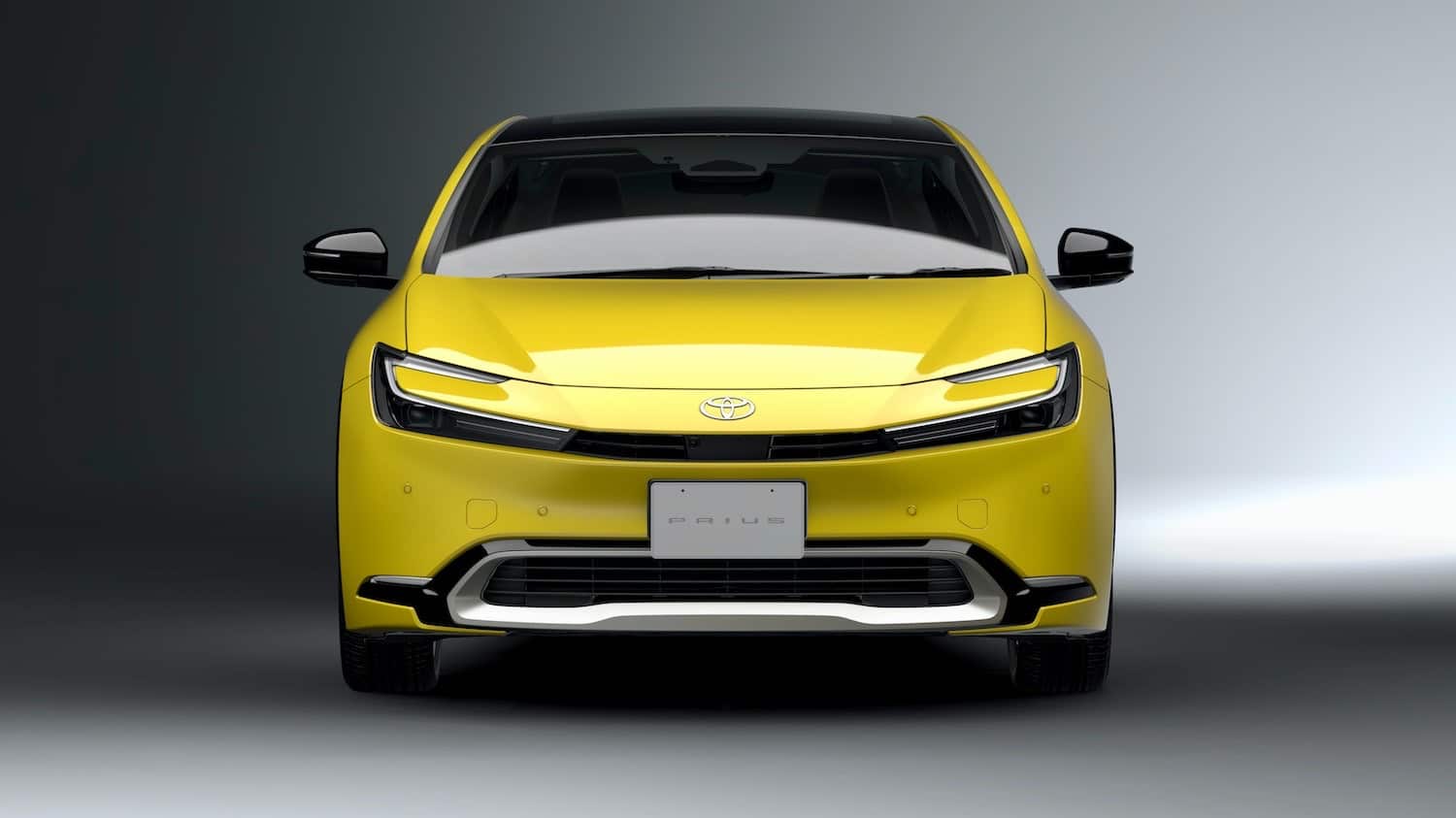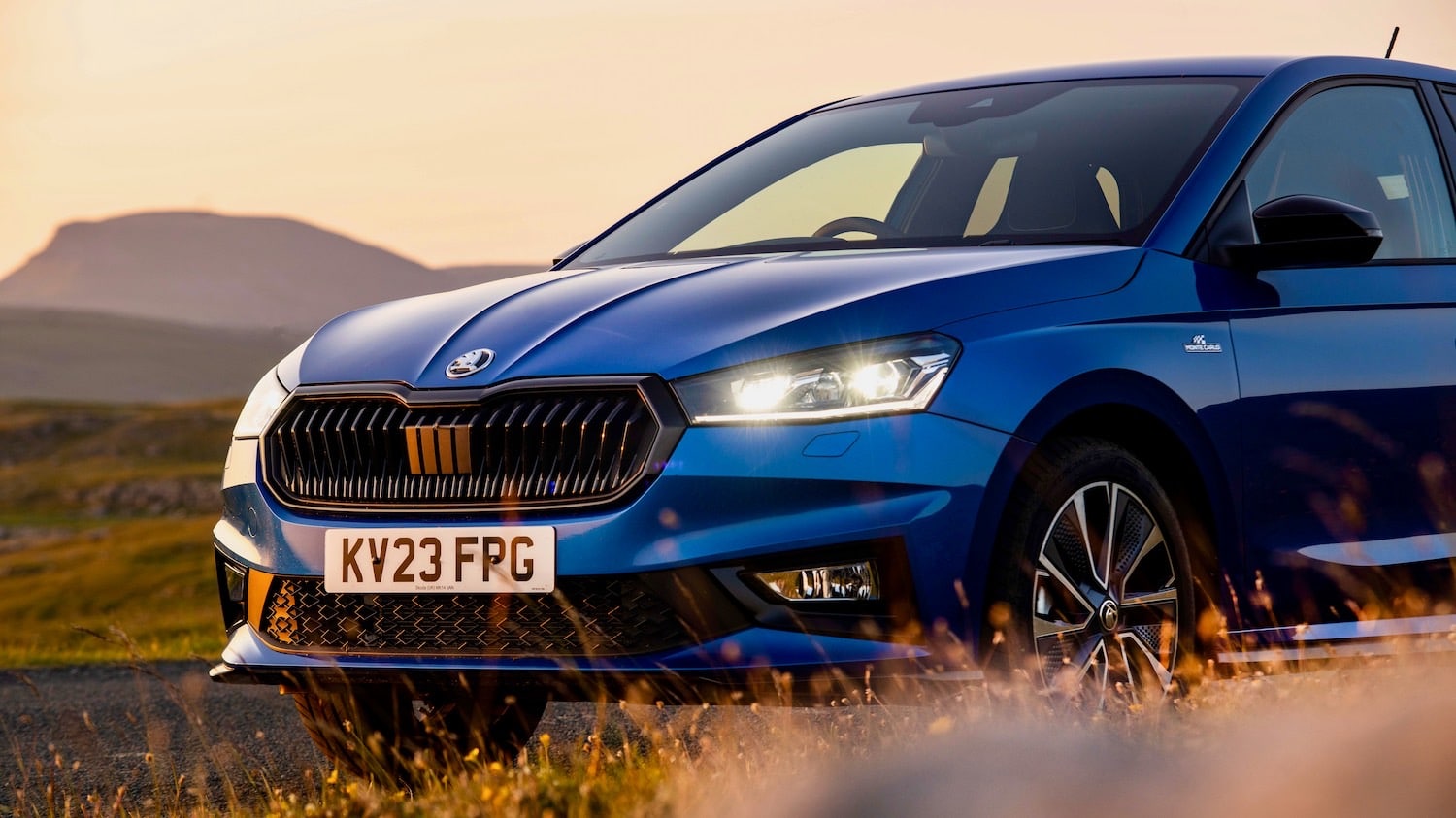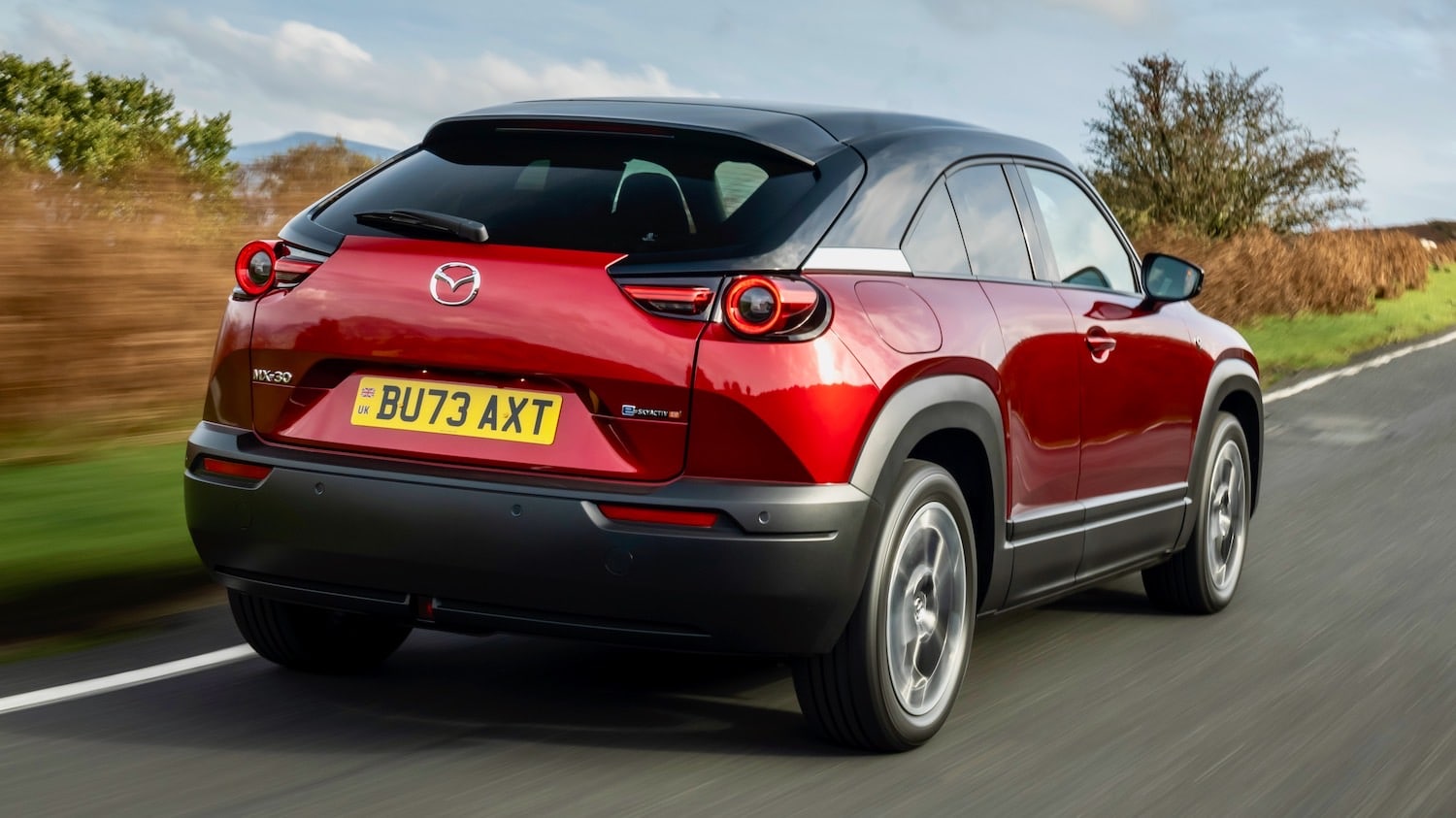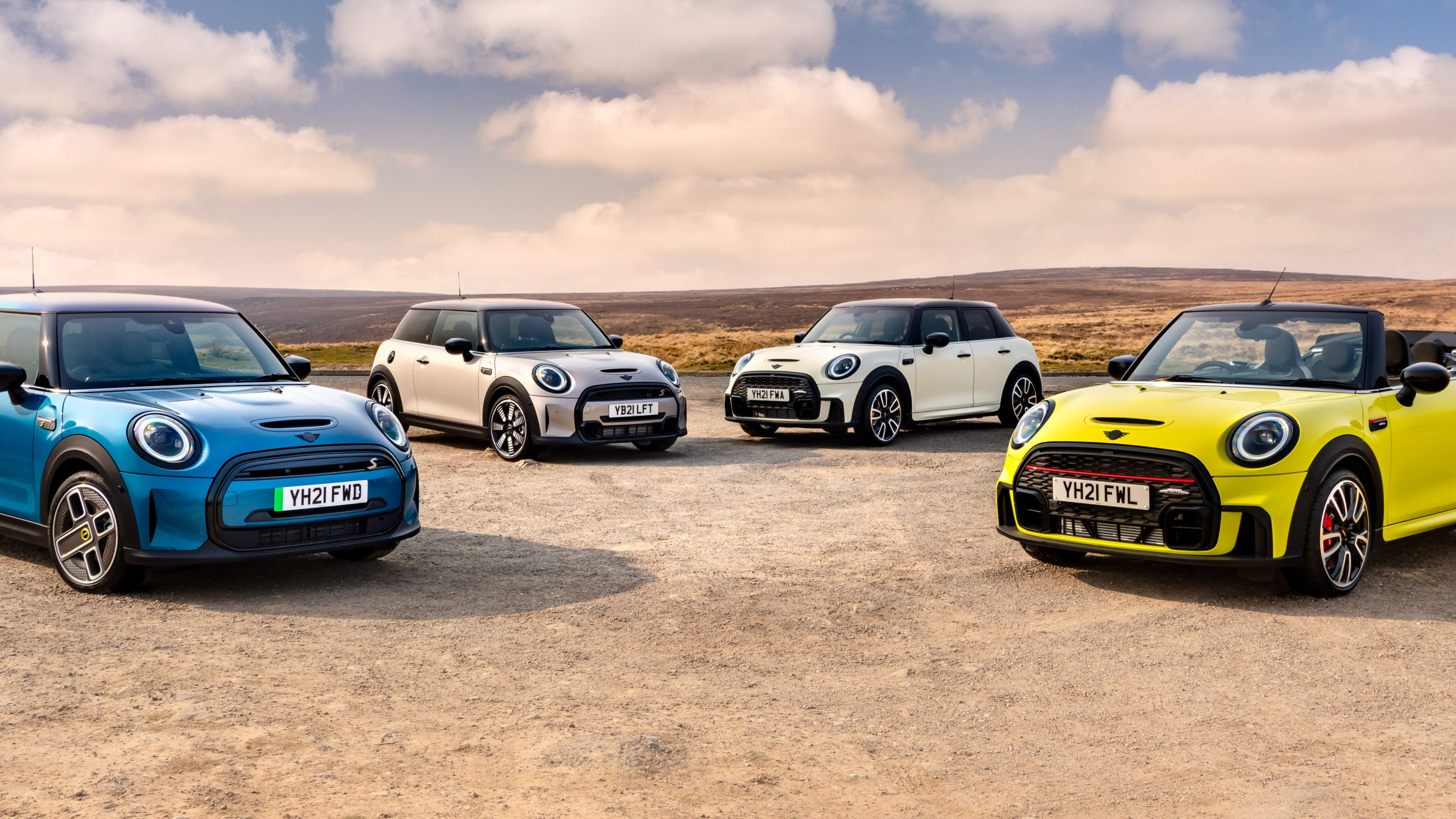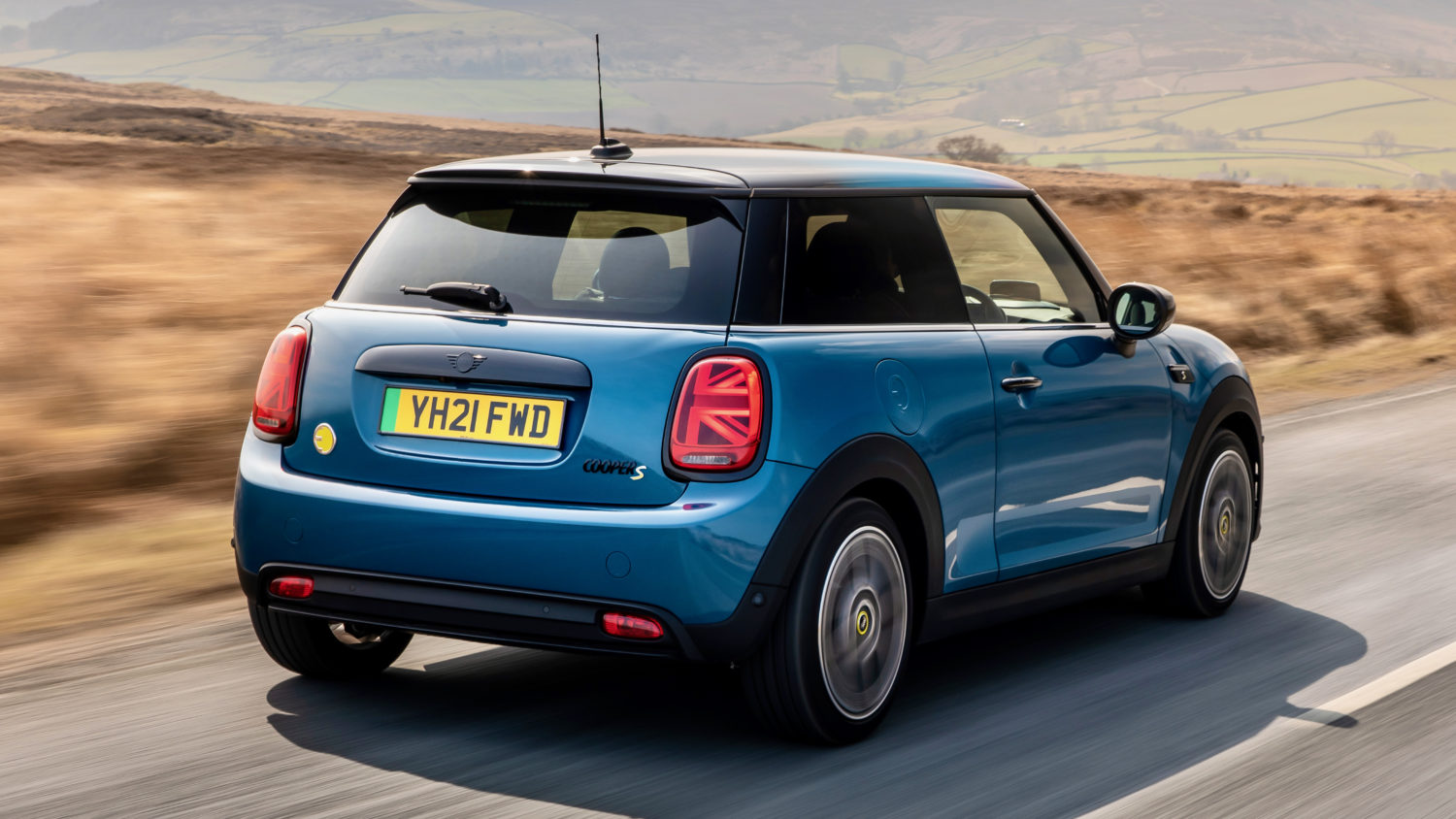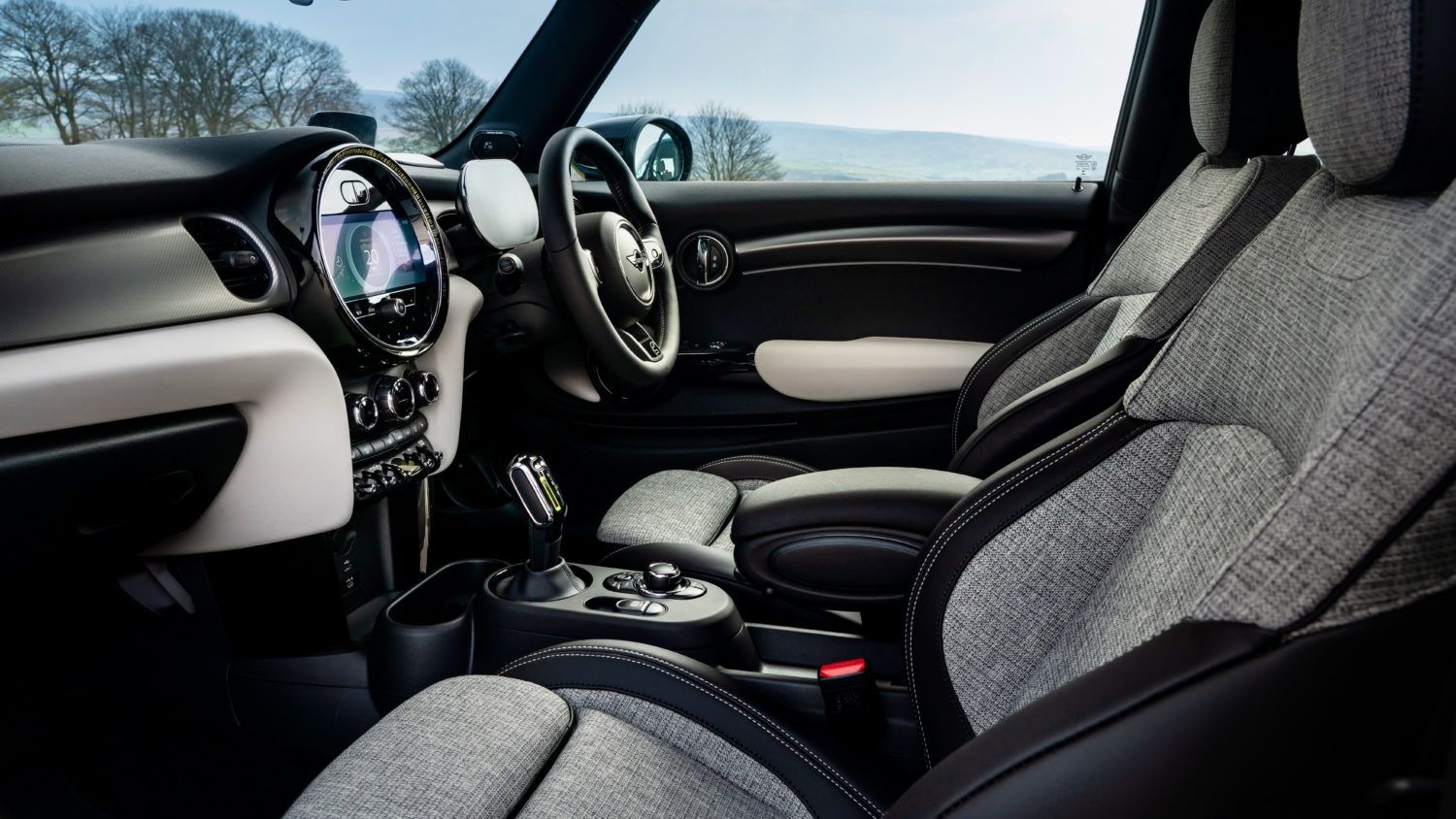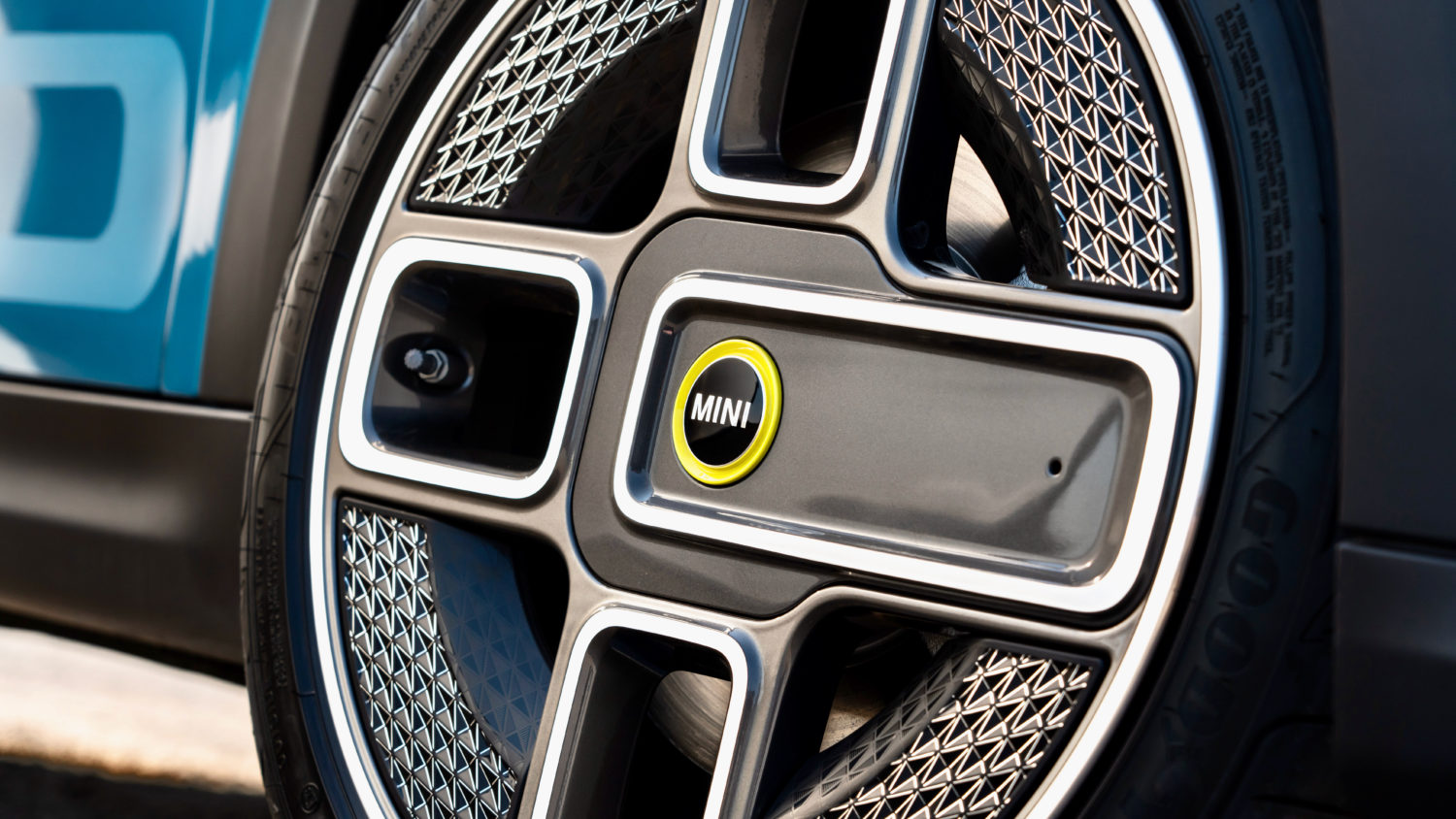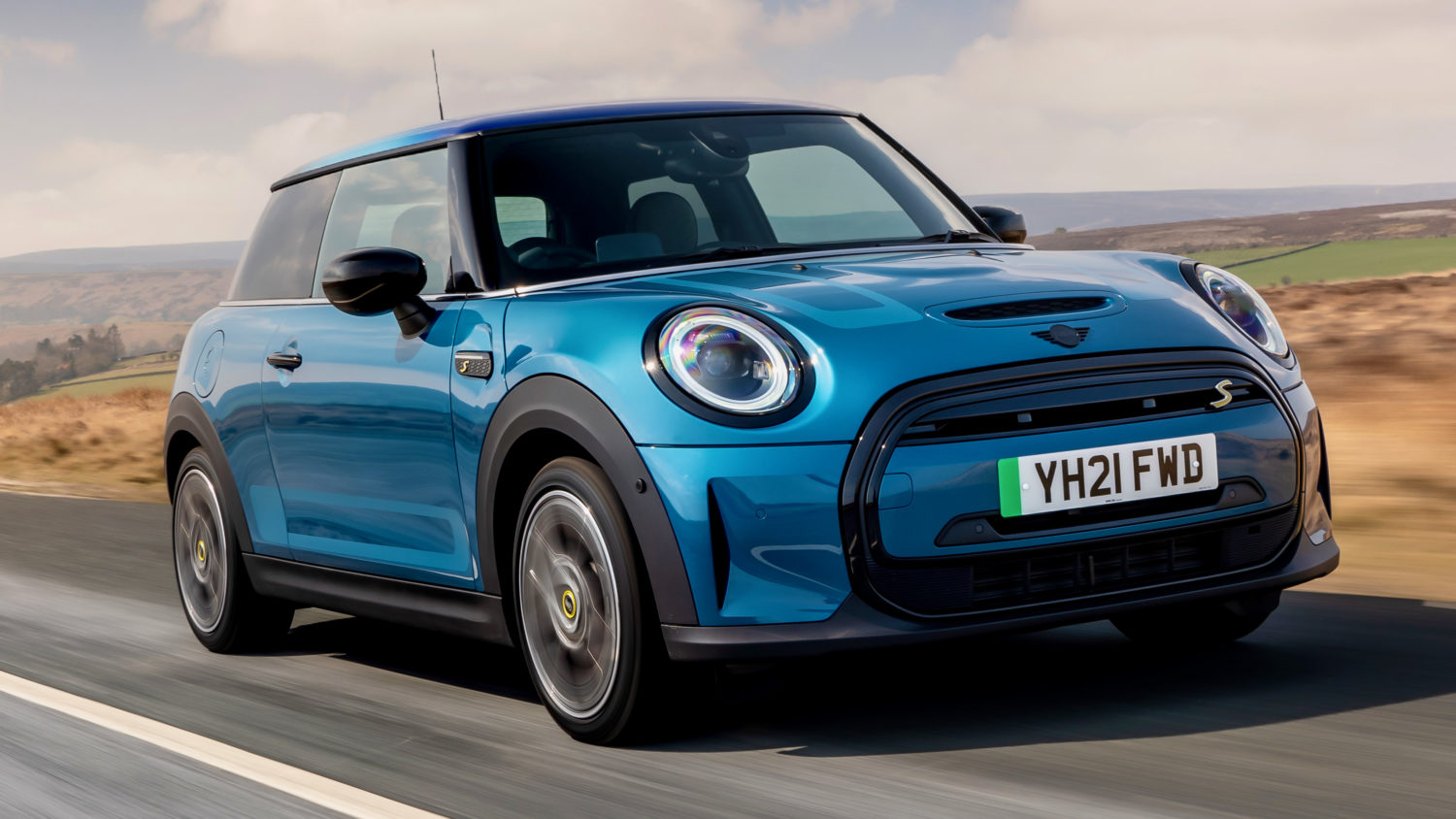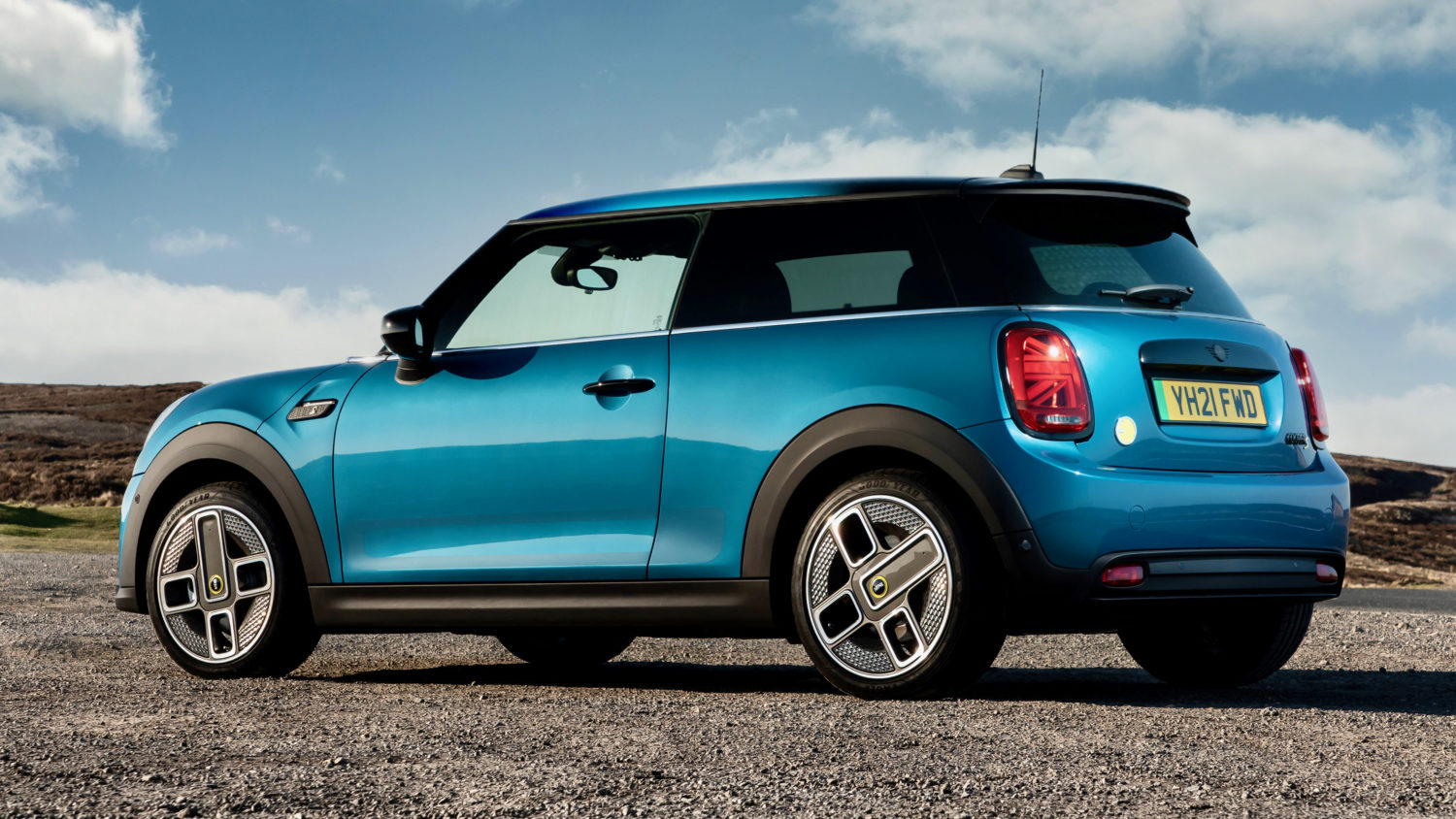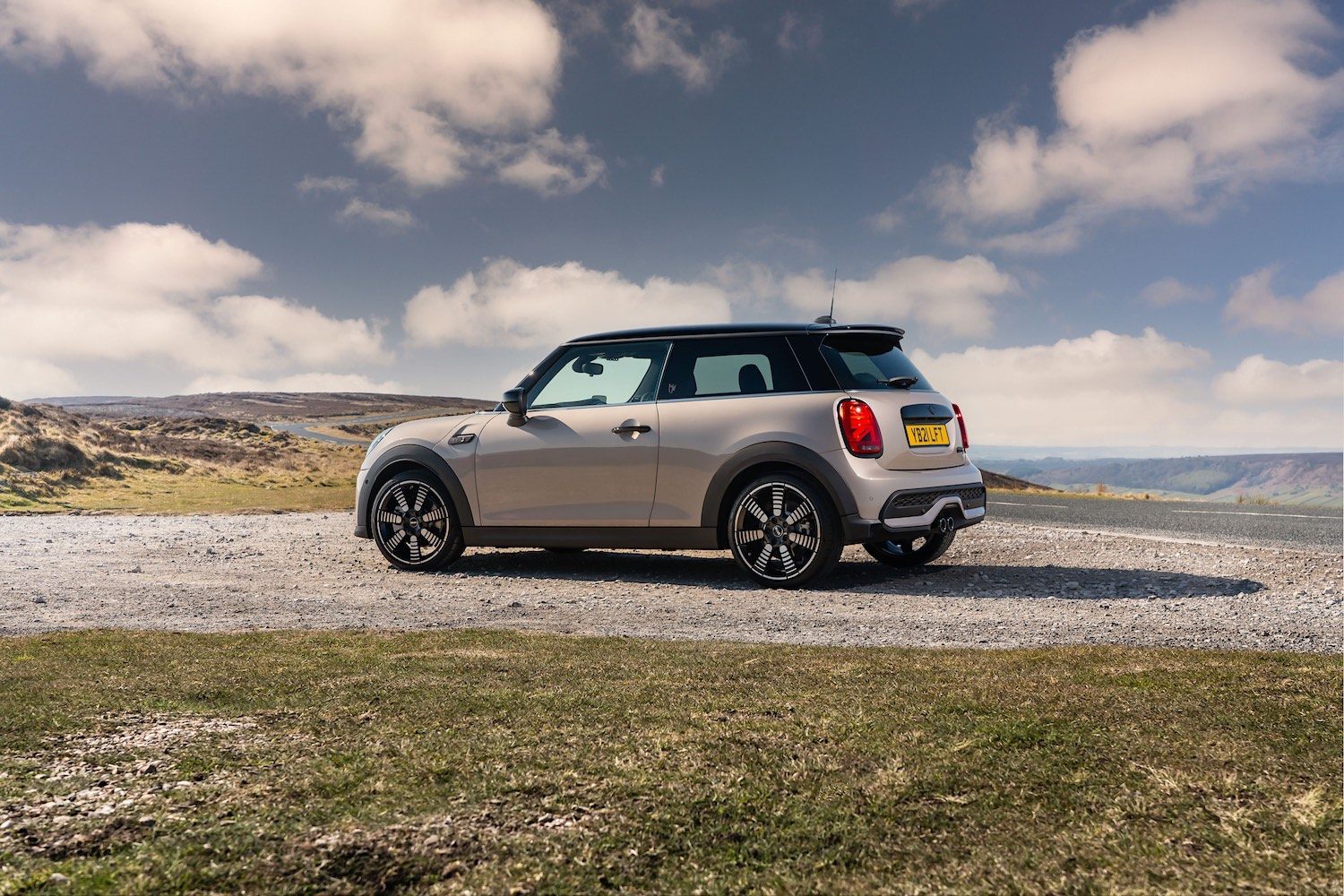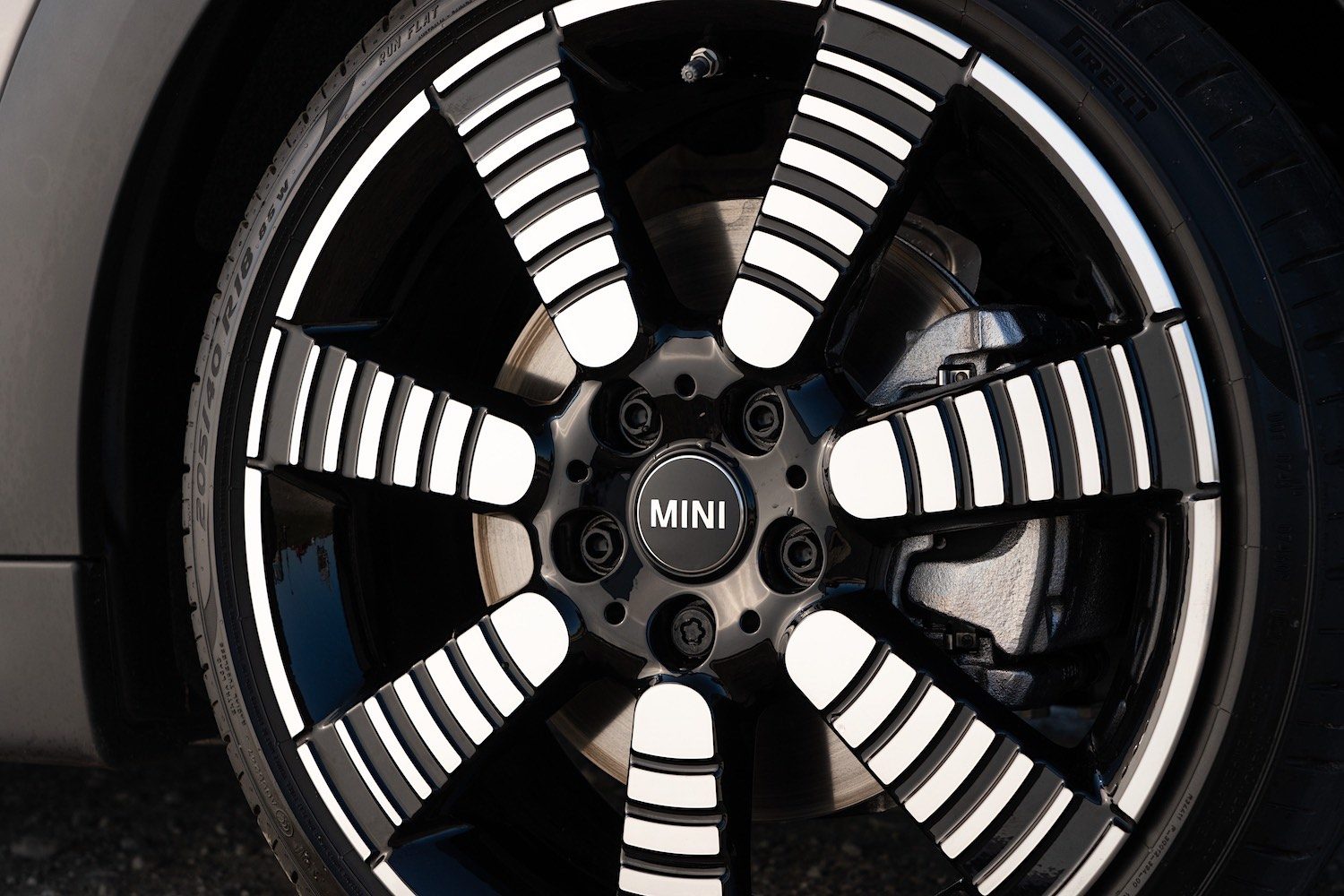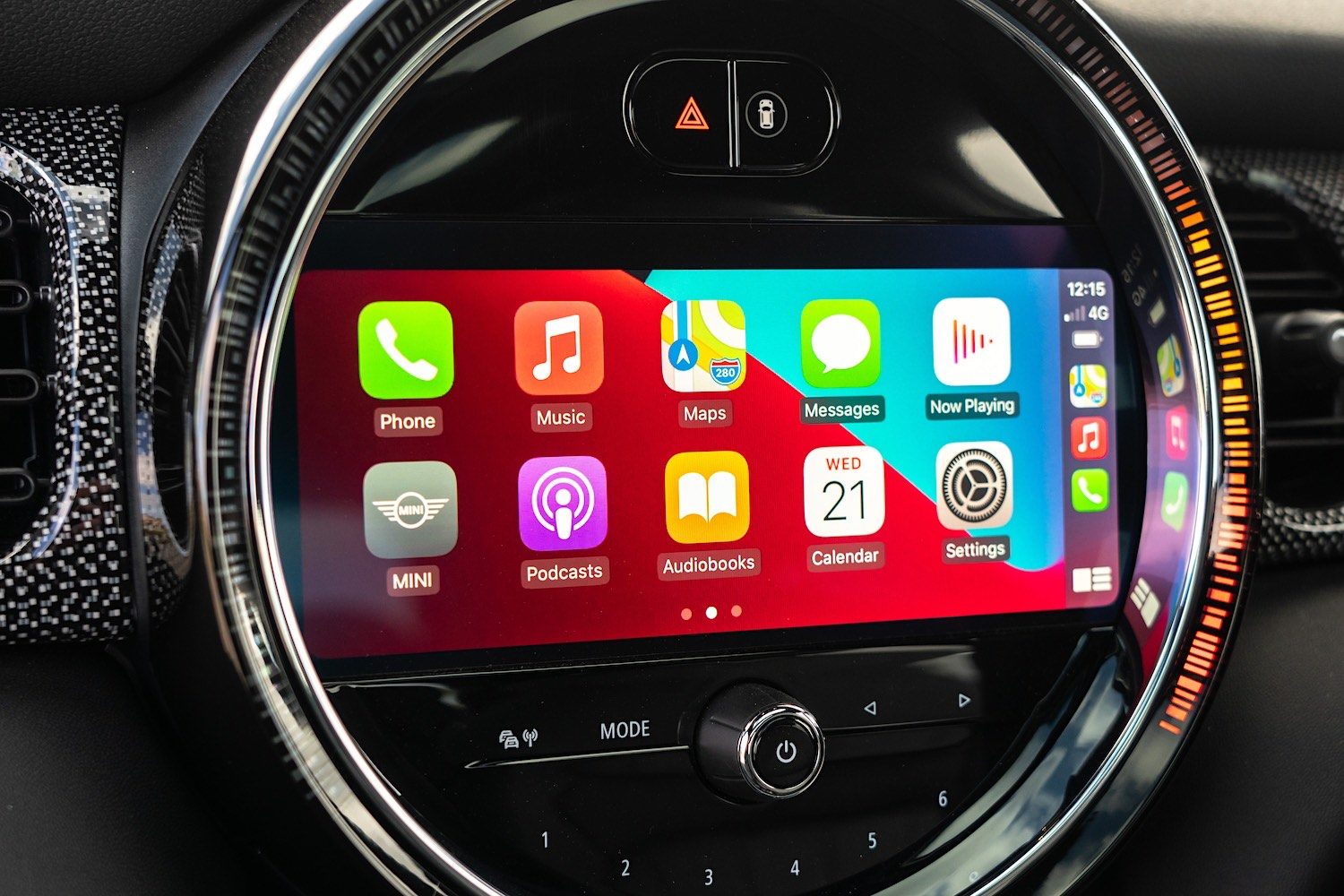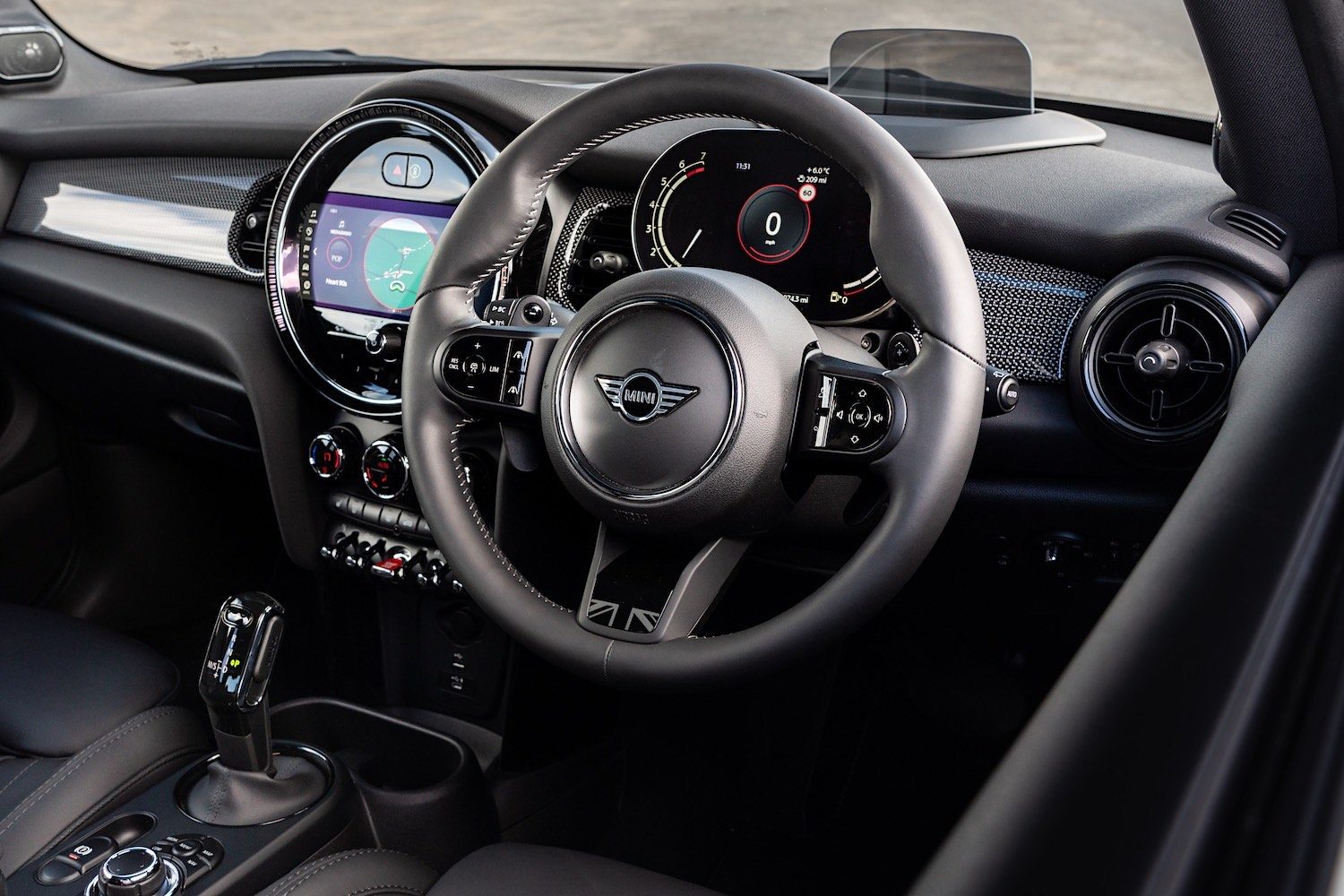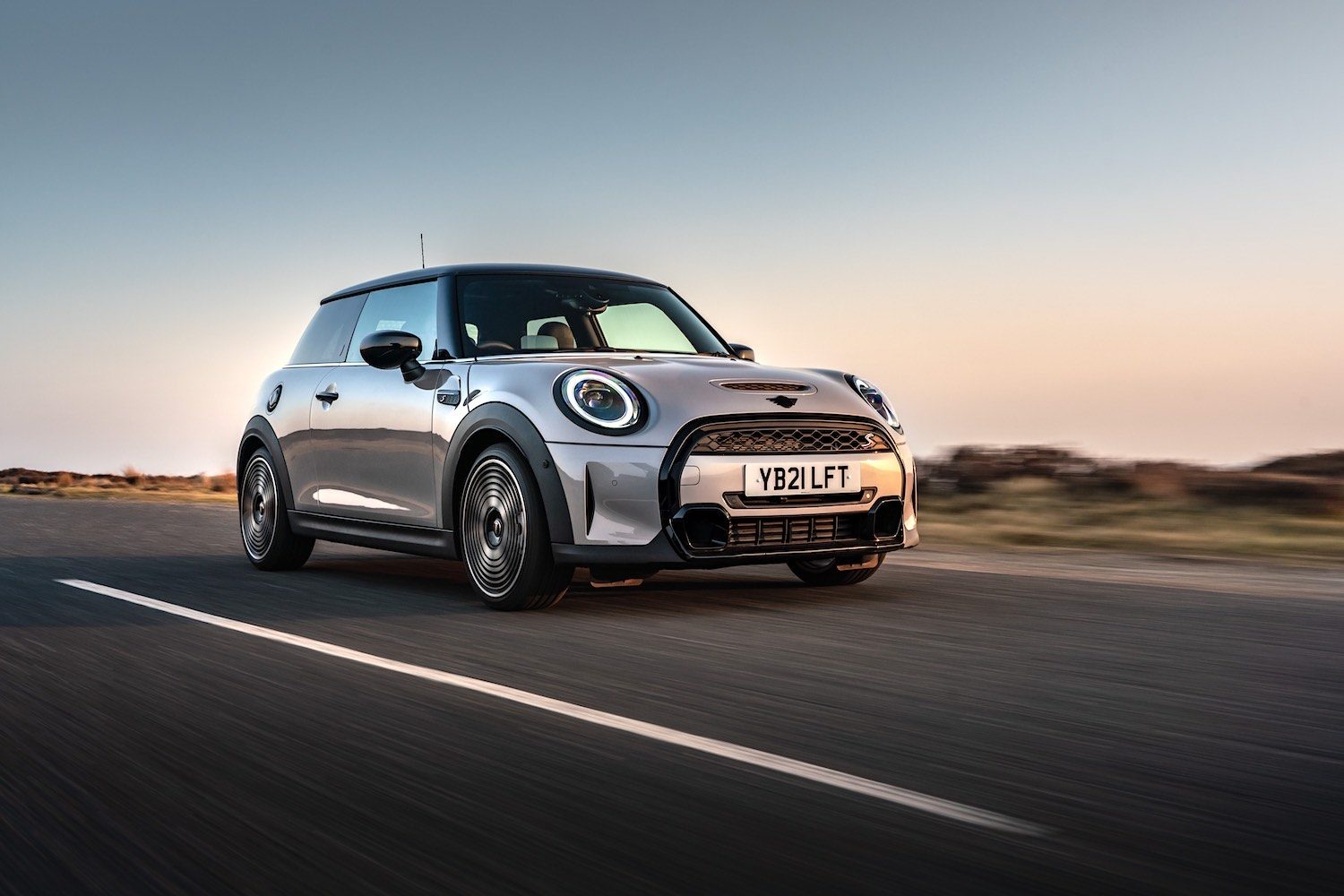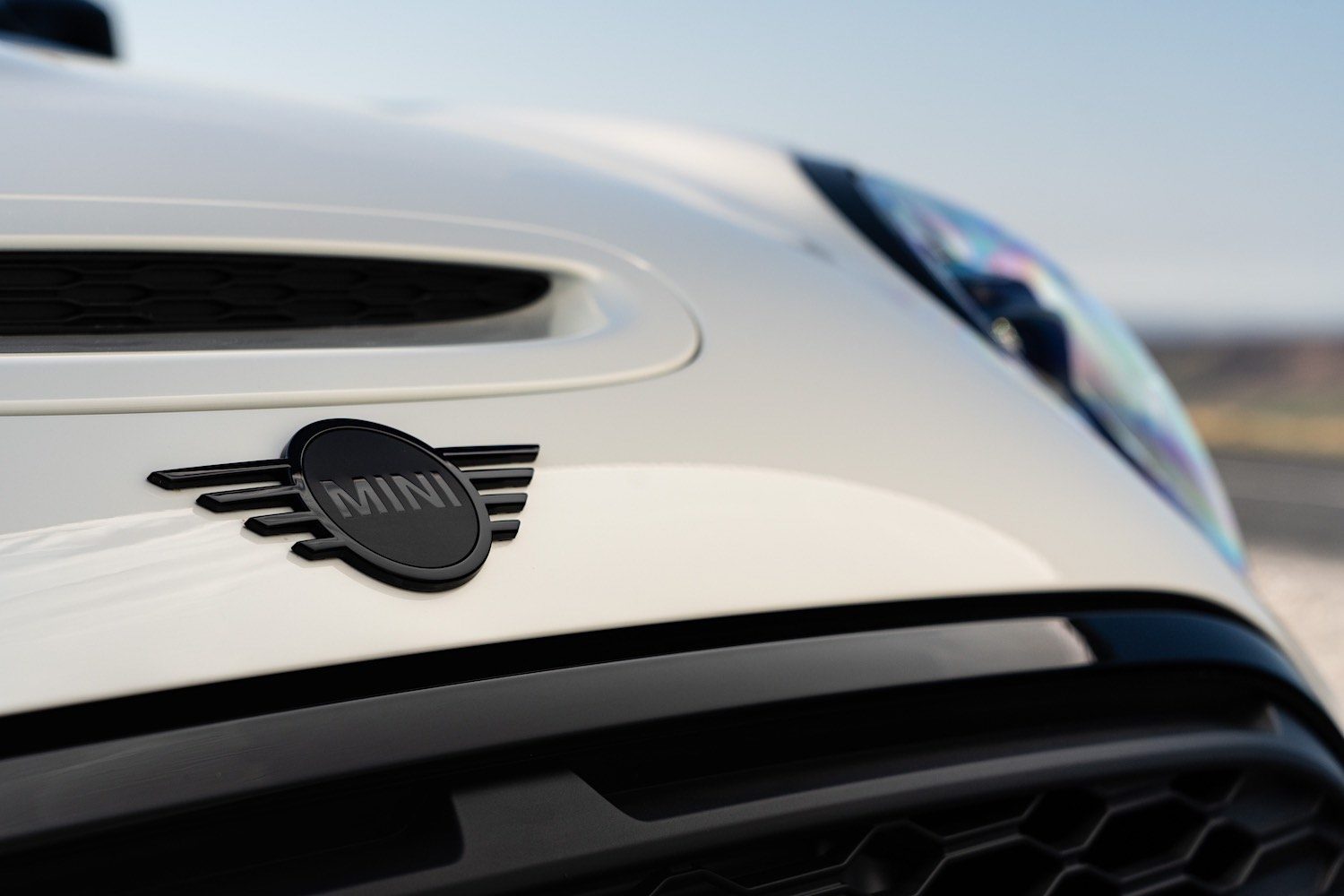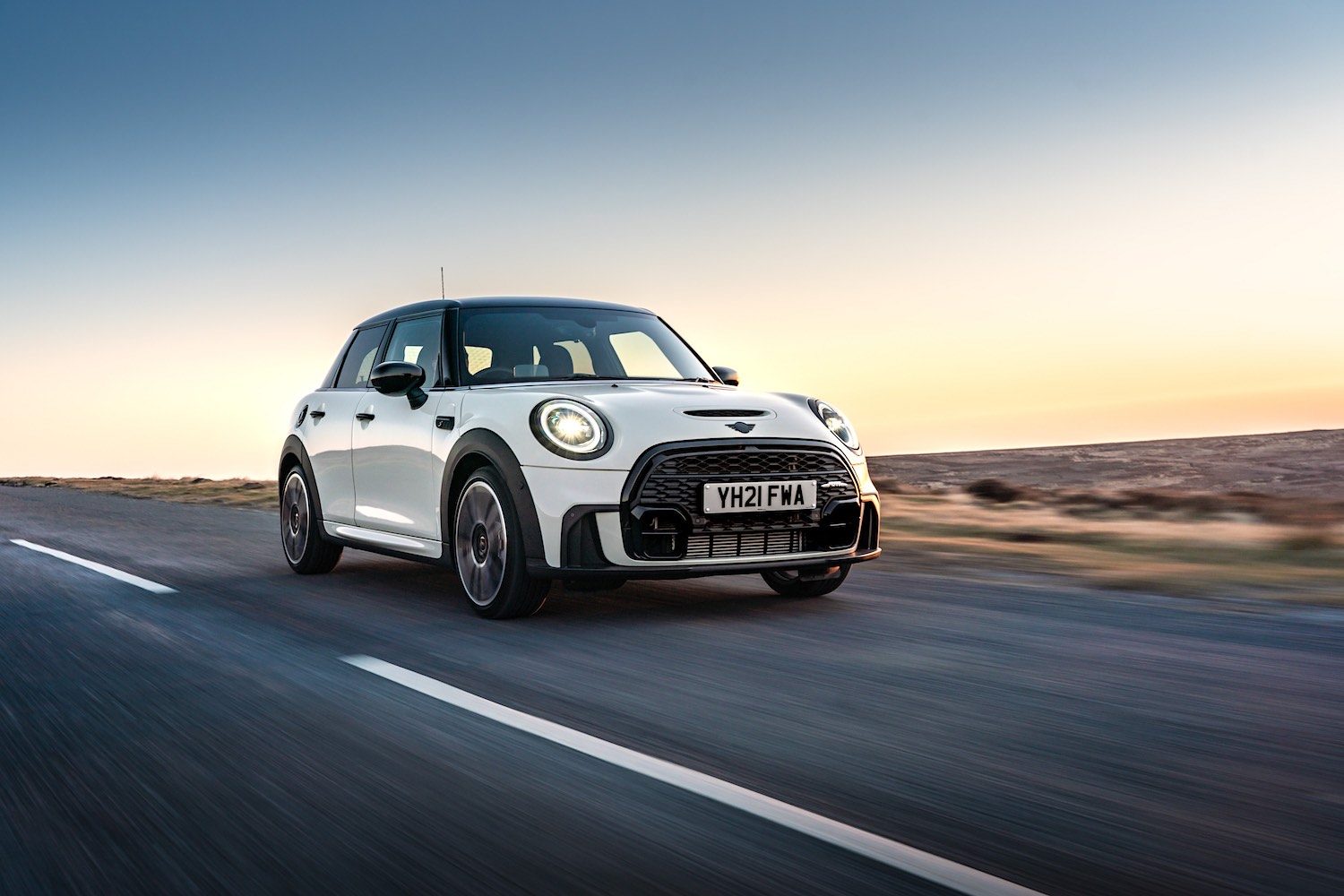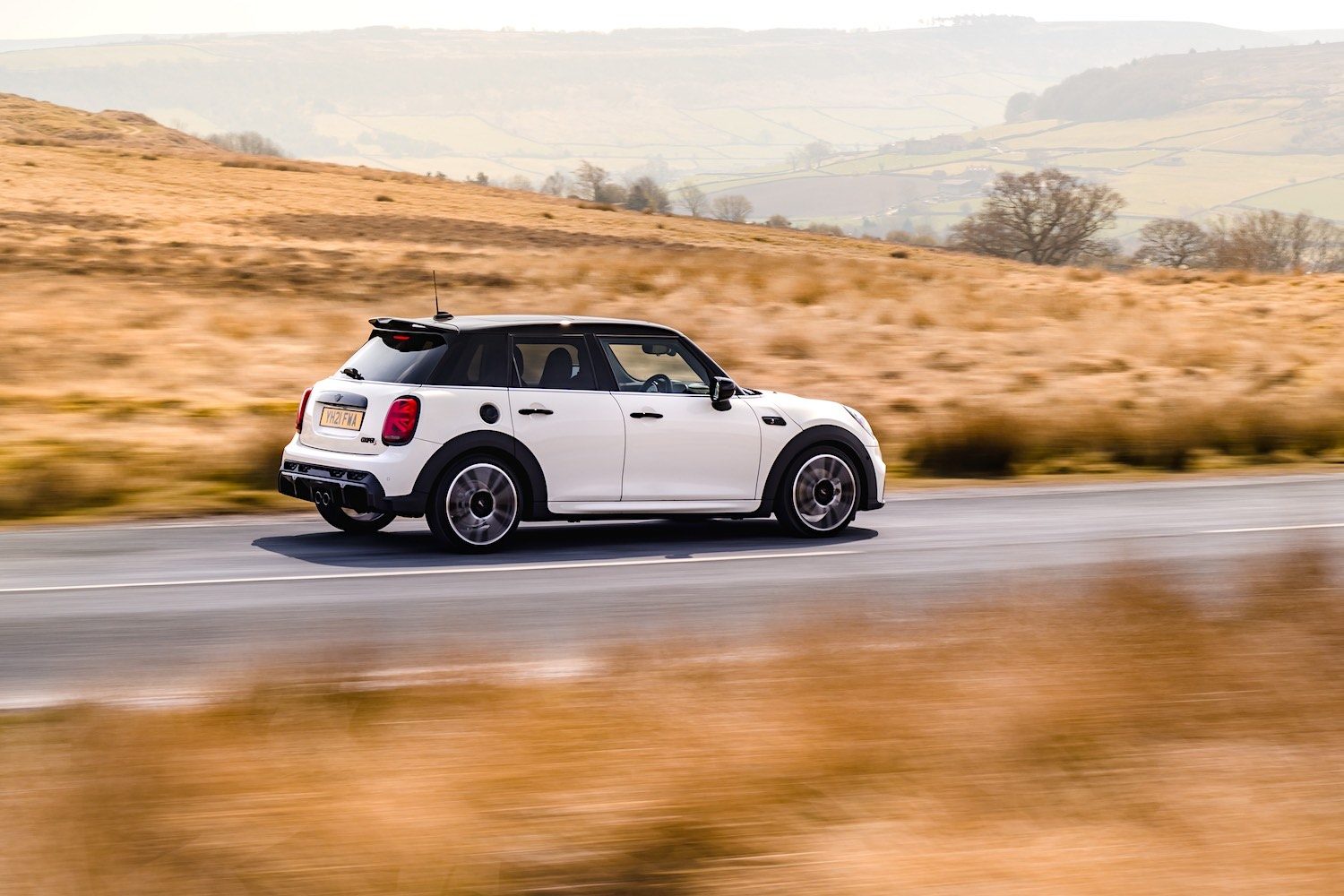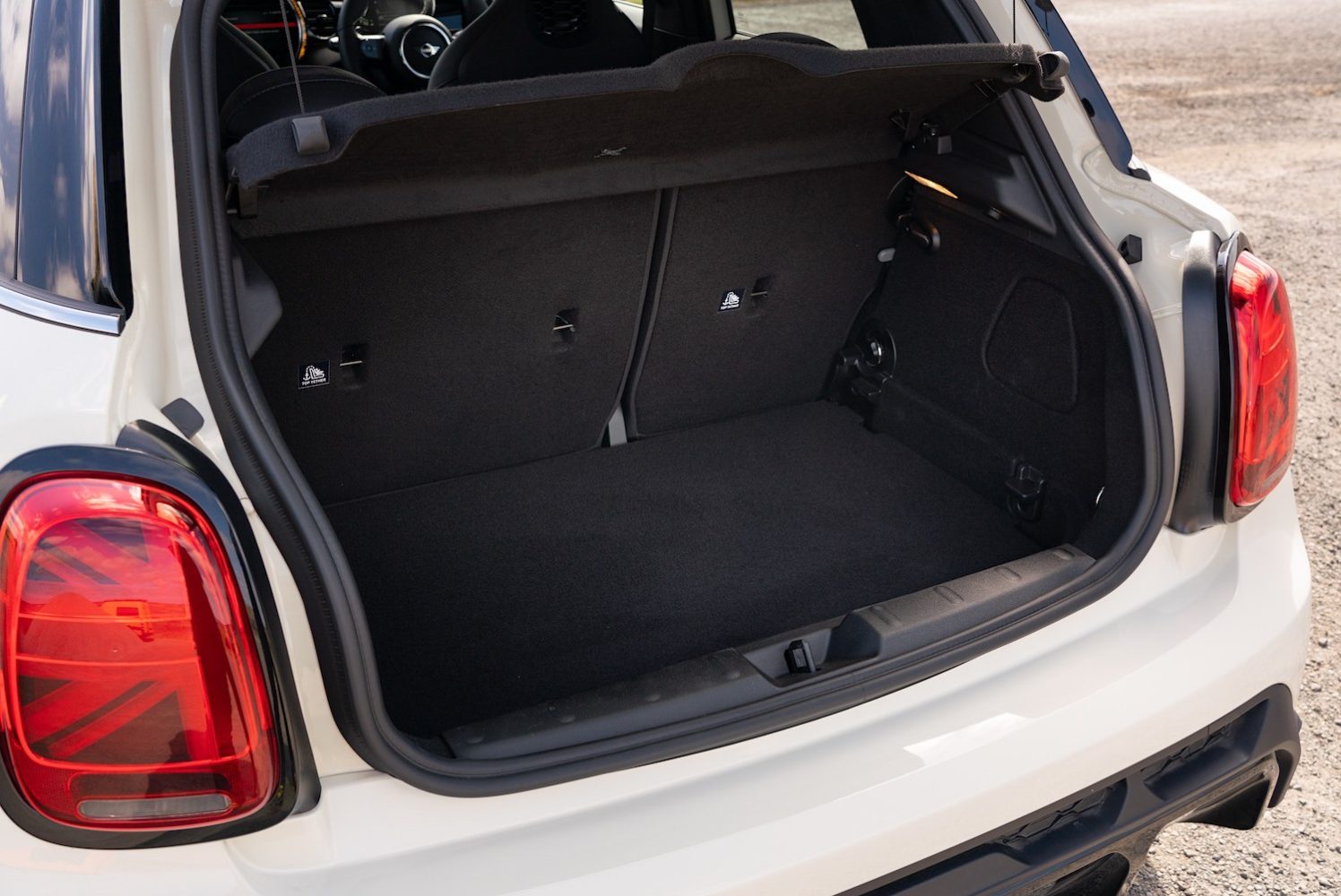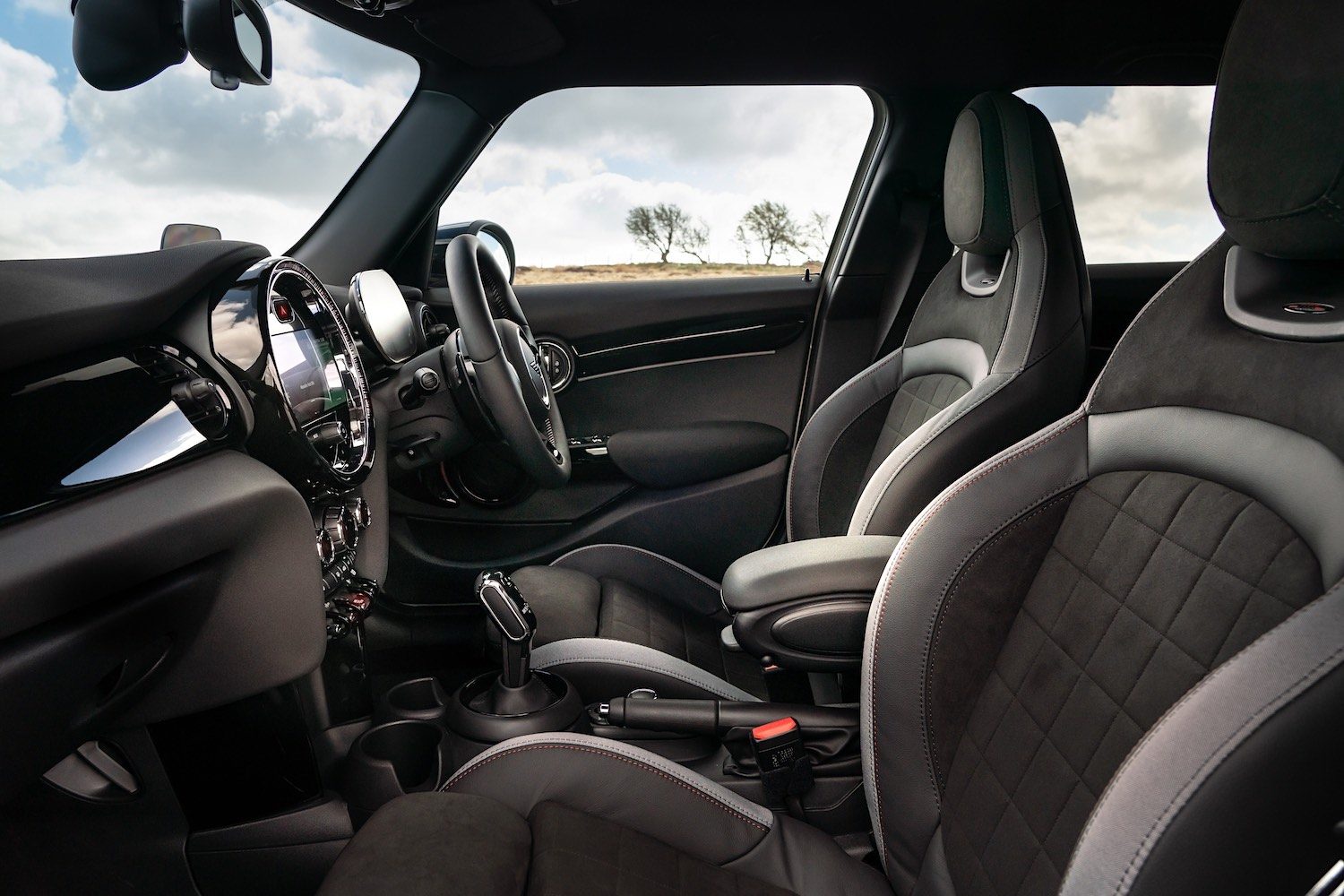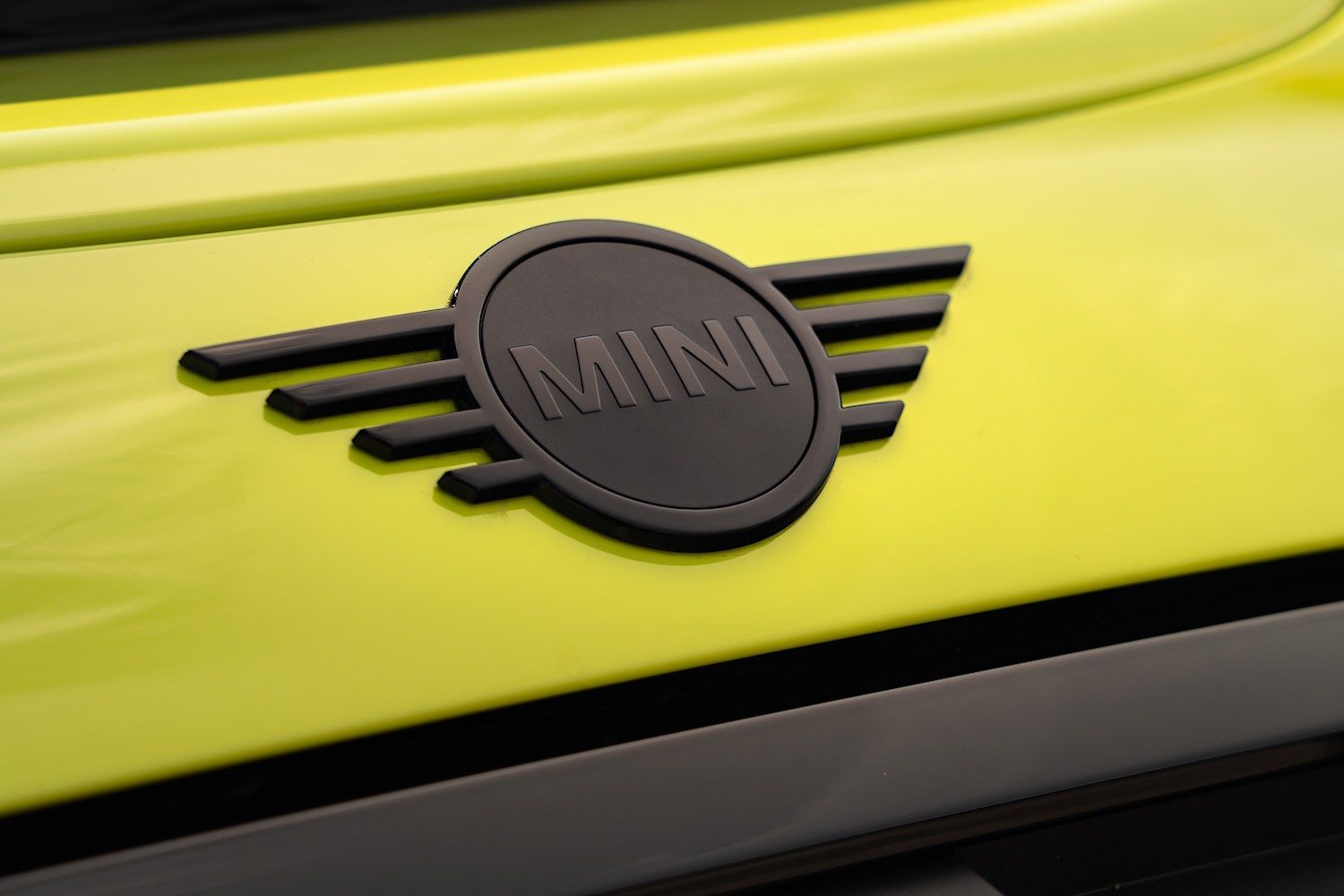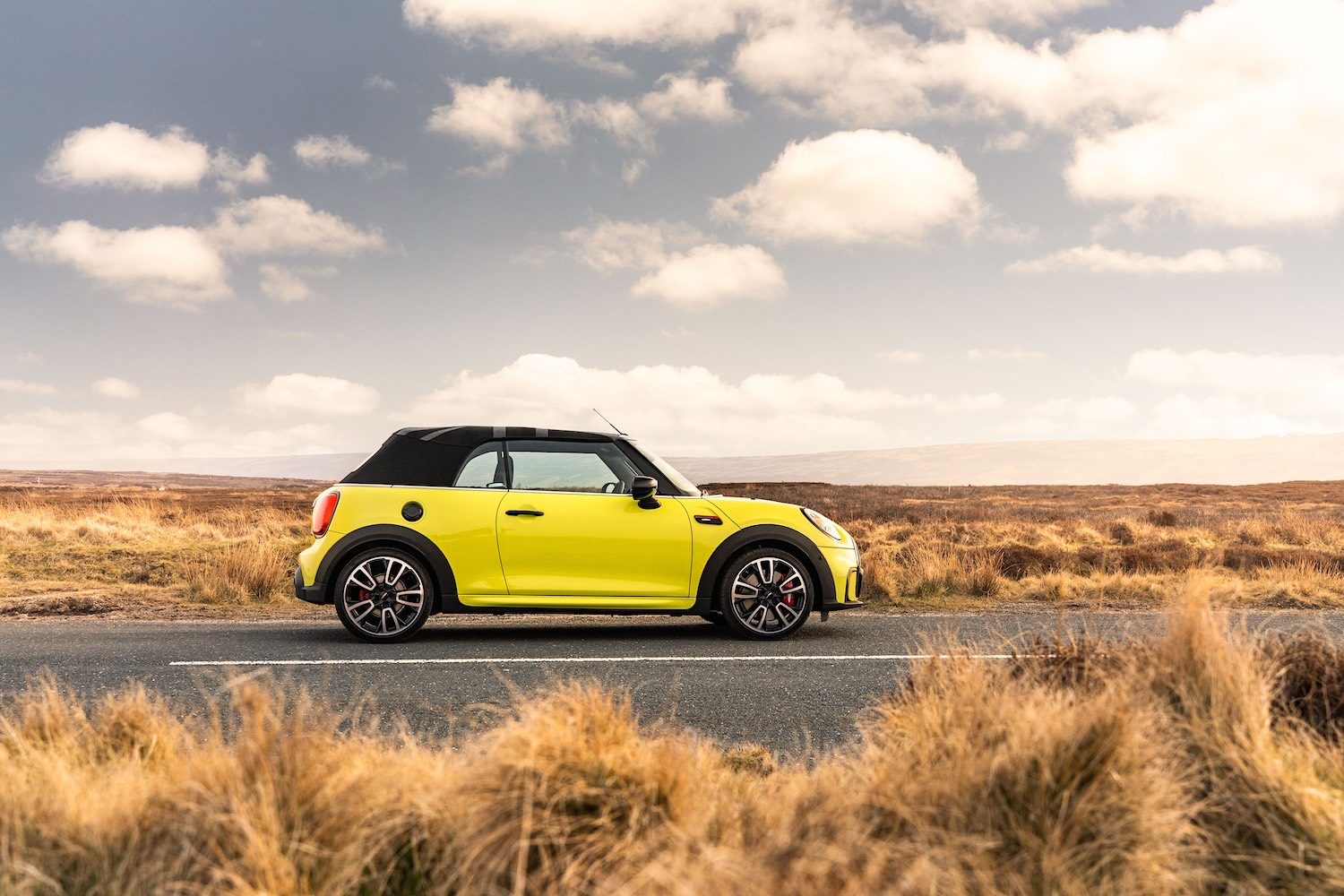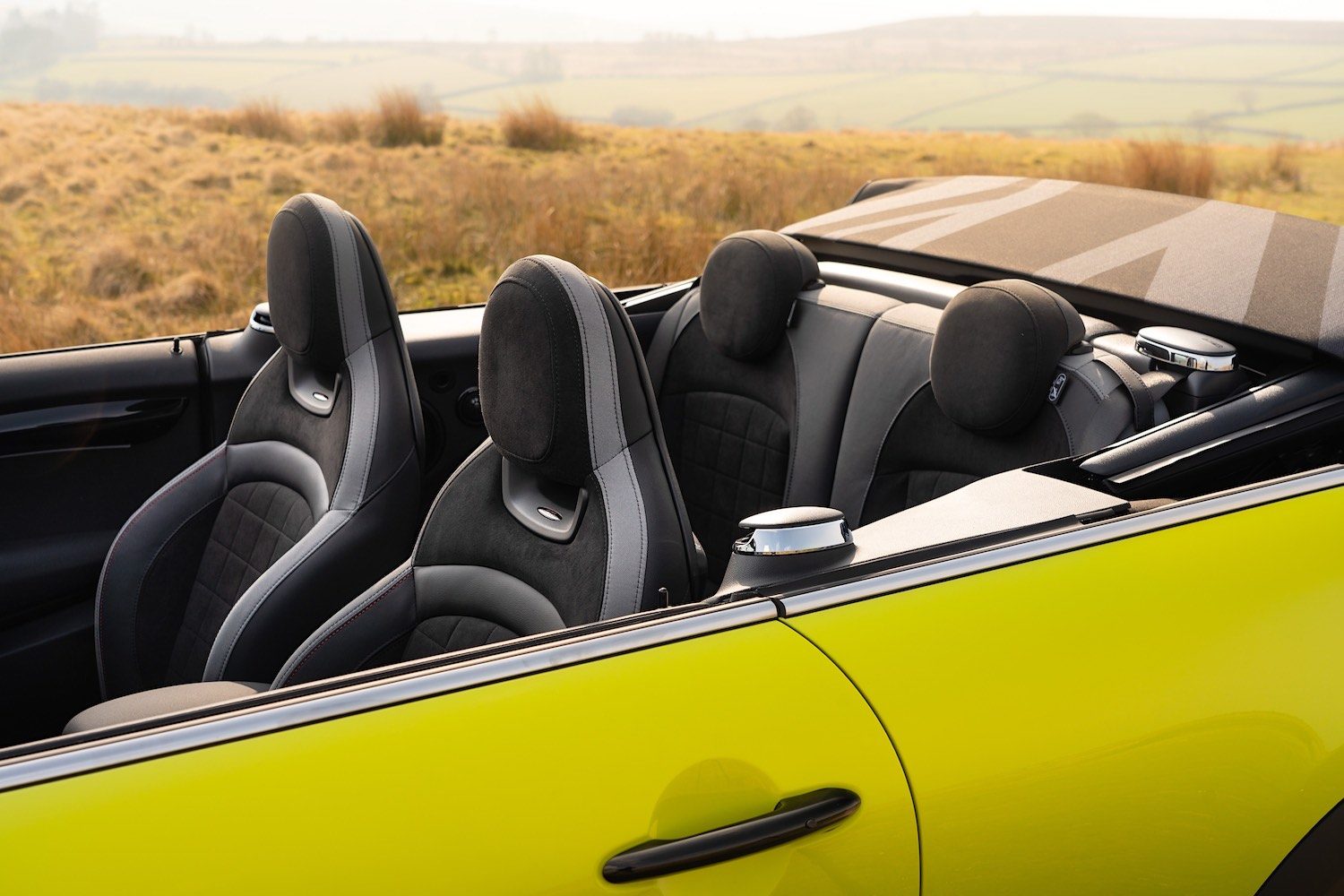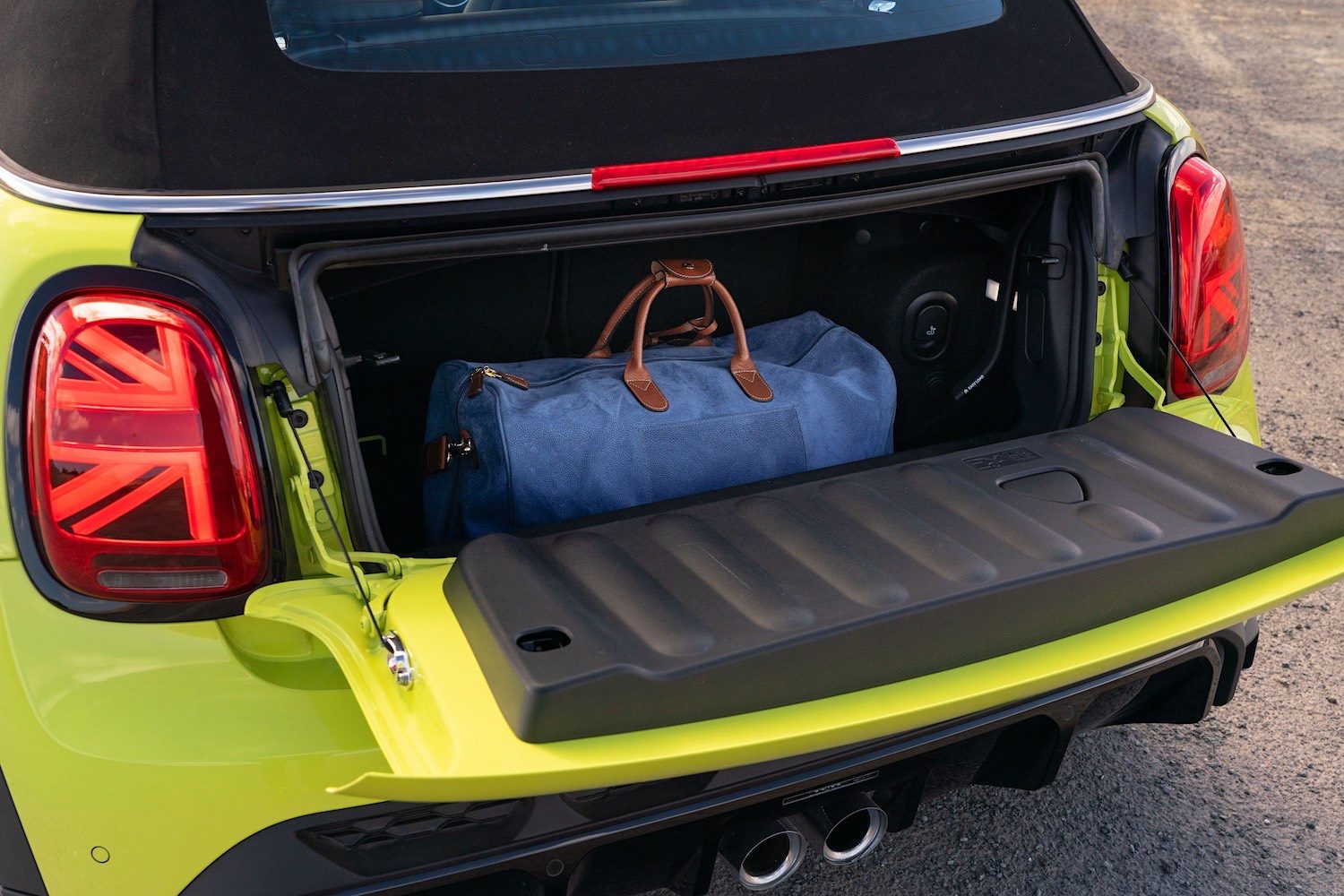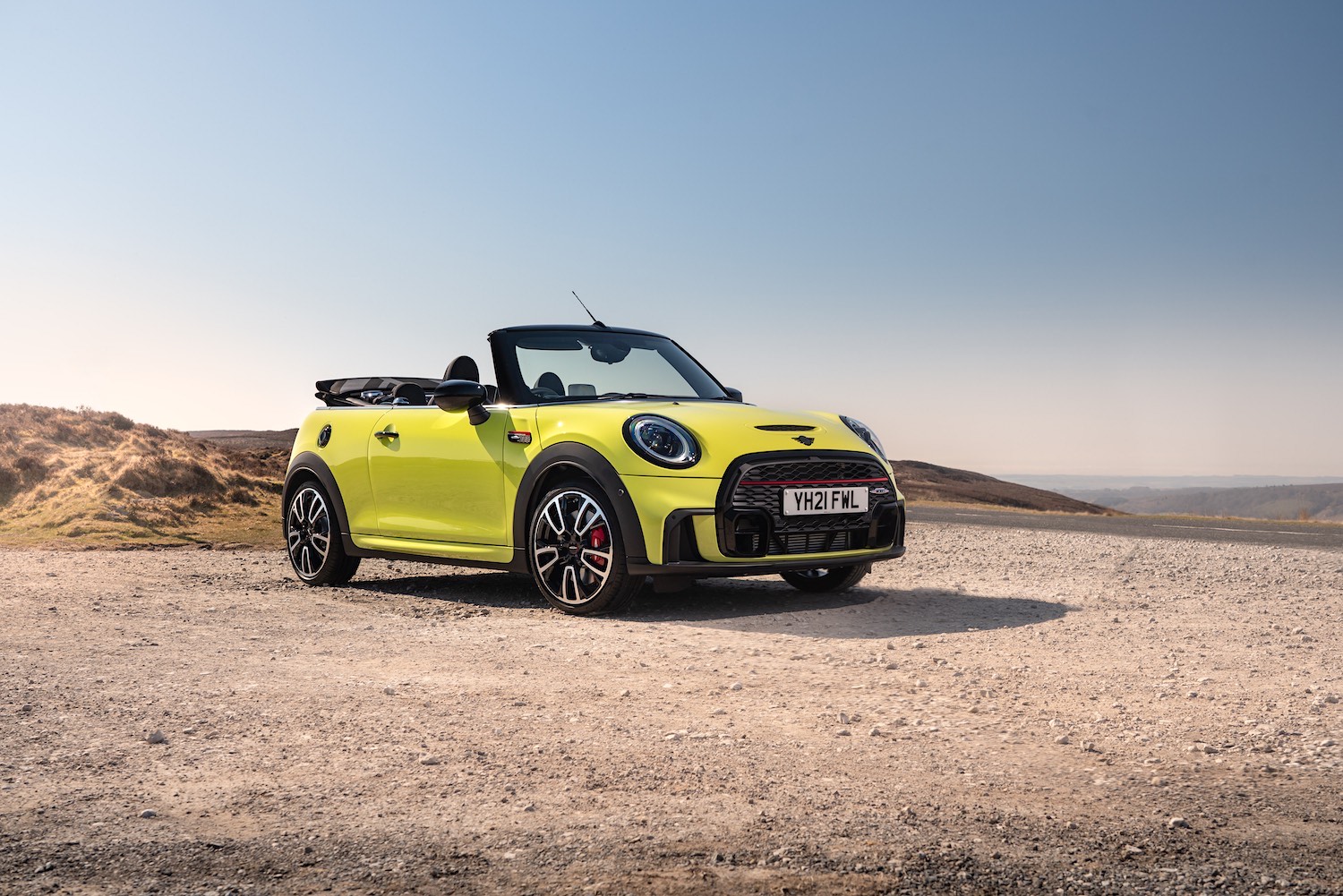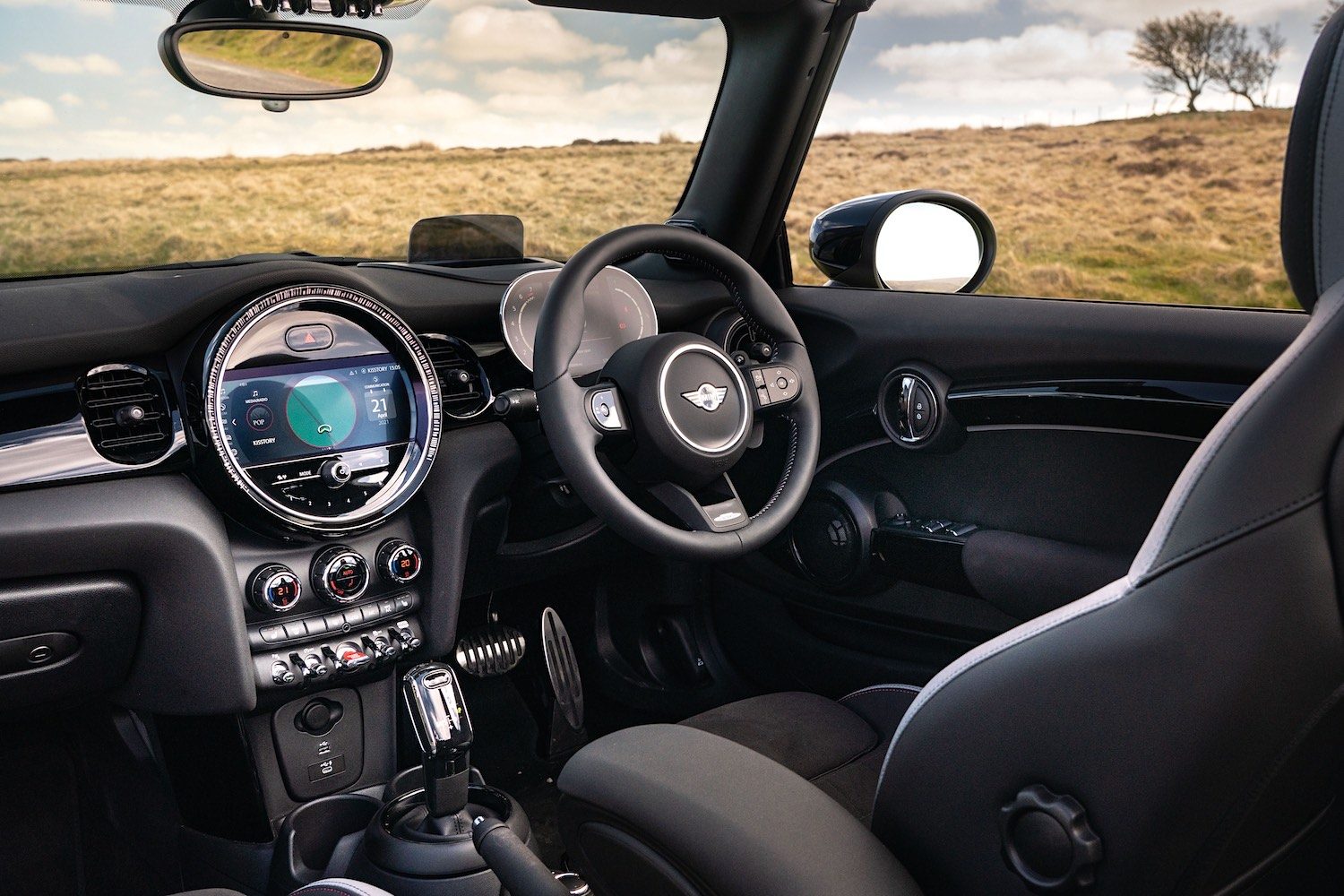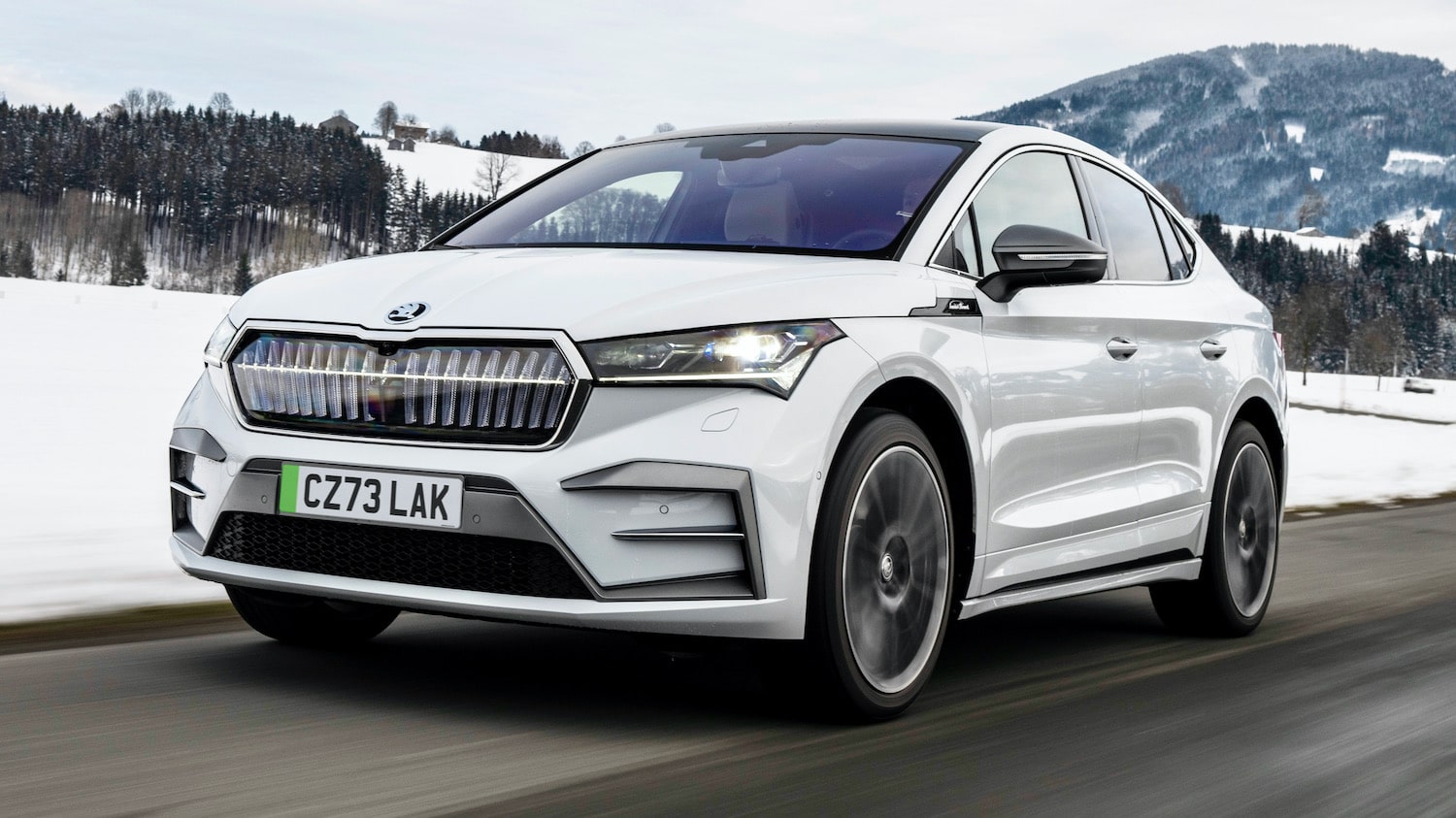Shiny chrome is out. For Mini in 2021, it’s Piano Black!
There’s now the gaping front black grille seemingly about to swallow the number plate. The headlamps are like black eyes, too.
At the back, more black, with both front and rear of the car thus looking more aggressive, even more so with the Sport versions. And there’s more inside, with black accents everywhere. And, yes, it works.
But the most significant bullet point of this Mini year is the big ‘E’ badge. The ‘E’ could well stand for Entertaining or Even Educating, Enervating or Elevating:
On the rear of more and more (and hot-selling) Minis is the badge that says the cars behind are following a Mini Electric.
Mini plans to be producing exclusively electric vehicles by 2030; they will continue to make ICE (internal combustion engine) cars until then, but with no new models of that type. If you now go for the Mini Electric, you’re in for a treat.
Anyone who is not used to driving a purely electric vehicle, indeed in the case of this Mini, will be in for a steep-curved learning experience. But a fun one.
The most obvious first curve is how the car slows down when you take your foot off the accelerator pedal. As you aim to stop at traffic lights or a junction or behind a queue of vehicles, you’ll probably find that you end up yards short. This is because the regenerative braking system that converts the car’s kinetic energy (speed) back into electricity to top up the battery can mean that you can come to a stop without even using the brakes themselves. After a while, you get the hang of it by very gently easing off the accelerator pedal; similarly, for example, when approaching a roundabout, the brakes may, when appropriate, be left untouched.
At the other end of the scale, OK, zero-to-62 mph in 7.3 seconds is brisk enough (although it, in fact, seems quicker in practice). Still, it’s at higher speeds that the Mini Electric takes off with astonishing acceleration instantly on tap, however fast the car is already motoring.
I questioned Mini about the price difference between £28,445 Mini Electric and its fossil-fuel brethren. Mini UK explained that the Electric is so well-equipped with today’s variety of techno and safety and comfort features and equipment that it ends up only a few hundred pounds more than its equivalent and then becomes much cheaper to run.
For the record, the Mini Electric Level 3 Collection (limited to 300 units) that I drove on the launch was priced at £34,470…gulp! But one of its many new features was its Multitone Roof; Mini spent four years developing a 3-point, 3-shade paint spray process that gives a subtle and unique-to-each-car finish.
So, yes, it’s an entertaining car, with Mini’s traditional super handling not in the least affected by the difference in battery and electric motor weights. In fact, weight distribution front to rear is at the ideal 50/50.
A few practice emergency brakings (using the brakes this time) proved how good they are whenever they are brought into hard use.
All the other current new Minis are sure to be entertaining to drive, at whichever level you start (£16,605 for a basic manual 3-door hatch). The Cooper S 2-litre automatic that I also tried still has its 178bhp producing zero-to-62 mph in 6.8 seconds. I tested the car over sixty-five miles, about twenty of them on the motorway and ten in quite heavy traffic; it showed an impressive consumption of 51.5 mpg.
Minis continue to be available with very efficient 3- and 4-cylinder engines and automatic transmissions.
There seems to be an indefinite range of colour combinations and applications on offer. For example, the convertible’s roof is available with a cool mix of a black and very dark grey Union Jack pattern. The flag is, of course, already a familiar feature in the rear lights.
In spite, or because of, electric charging anxiety issues still being a worry, with many stories of compatibility and payment issues, Mini has organised its own payment system, in agreement with the many different suppliers covering 11,000 UK charging points: owners can simply use an app or payment card.
Mini claims the car’s range is between up to 143 and 145 miles. The ‘up to’ phrase is the one to consider; it can mean anything and, anecdotally, I hear regularly from drivers of EVs who have had one sort of range problem or another — one pointed out that winter driving, involving the lights the wipers, demisters and heaters reduced the ‘up to’ range by a good third. I hasten to add that his particular car was not a Mini.
Whichever 2012 Mini appeals, and there is an almost bewildering choice (e.g., just because it may be a Cooper S, it may not be the ‘Sport’ version), this car, now celebrating twenty years in production, continues to be a very attractive proposition.
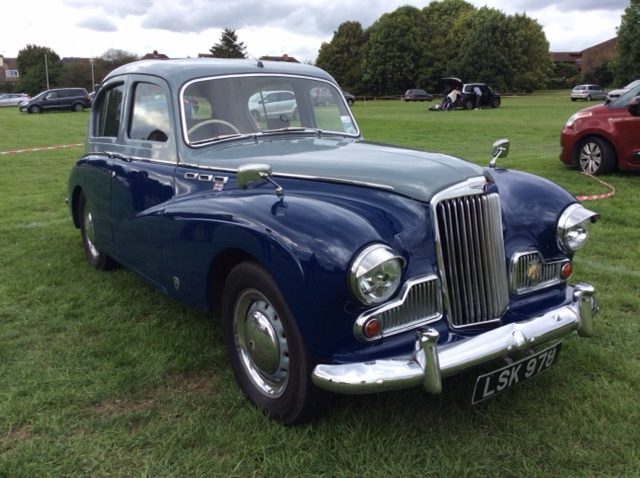
Tom Scanlan
Motoring Journalist
Tom Scanlan has written for a wide variety of magazines and newspapers, particularly the Reading Evening Post for ten years, having got into motoring journalism in 1973 via the somewhat unlikely back door of the British Forces Broadcasting Service. BFBS produced a weekly radio motoring show for the services overseas and Tom produced it, as well as interviewing experts and eventually reporting on cars.
He is into classic cars and has owned Porsche, Ferrari, pre-war Alvis and Rileys and currently owns his fifth old Alfa Romeo, a 1984 GTV 2.0.
In his spare time, Tom is a professional cricket coach.
Recent Reviews
The latest cars, suvs and crossovers reviewed by our experienced journalists.
Nissan X-Trail e-Power, takes charge
The Nissan X-Trail e-Power, no need to charge this one Car Reviewed: Nissan X-Trail e-Power Tekna It’s been some time since the first Nissan X-Trail, 23 years in fact. In 2001, Nissan loaded up its commercial rifle and aimed it at Toyota’s Rav4 and Land Rover’s Freelander. The X-Trail was considered a better drive than…
Hyundai Ioniq 6, an attractive proposition
The Hyundai Ioniq 6 ev has dared to be different with its design Car Reviewed: Hyundai Ioniq 6 I will admit, I have driven the RWD Premium and AWD Ultimate a good bit before my test car was delivered. I spent around one hour with each vehicle, but after both drives, my mind was made…
Škoda Enyaq L&K, Luxury Model on the way
A new L&K model has been added to the award-winning Enyaq range by Škoda. The new model is the first L&K to be driven entirely by an electric powertrain. It is part of a comprehensive model-year upgrade that also brings faster charging, greater driving range, and improved performance. New L&K models, named after the brand’s…
